Guyana (and then some) 2024 – Trip Report
Introduction
Wow – my 4th trip to Guyana was the best yet! From low water to over a dozen species of massive fish to incredible wildlife viewing to camping like kings in the jungle – we had a blast. Best of all – I had the privilege of sharing the experience with some wonderful folks.
I know few people actually read these longer blogs from beginning to end. I’m sure most will just scroll down to the pictures. I get it – I often do the same thing. In fact, in not going to discourage you from doing that – scroll away. For those that are interested in the little nuances that made this trip distinct from the others, please read on.
Over the years, I’ve taken a few different approaches to capturing what I experience on my trips to Guyana. This time, I’m going to structure it kind of like an “after action” report that I often produced while in the military. Remember that blog I put out a few weeks ago? That’ll be how I structure the meat of this report. I’ll also provide a daily itinerary, with pictures of course, so you can get the “play-by-play” of how it all unfolded.
One extra detail – I spent a week in Florida prior to departing to Guyana. While I was there, I fished (of course). I’ll get into detail about this portion of the trip in the “play-by-play” section of this blog. OK – here it goes…
Research
I didn’t do much research this time around – I had 7 weeks of experience to work with so I knew what I was getting into. I knew the guides, I knew the region, I knew the species, I knew the tackle. However, I got a little presumptuous about the weather/conditions.
In years past, I went to Guyana in January or early February. During those periods, the water was always high (post rainy season), but on the way down. Temps were in the low 80s and rain was a daily occurrence. For this year’s trip, I wanted to go later than I ever had to experience what it’s like to fish there when the water was low. Well, I got to experience that – to the extreme. I’ll get deeper into how this affected our trip in the weather section below.
Lesson Learned
There isn’t much of a weather app or website that provides a good gauge of what conditions are like in remote parts of the world. Even if you’ve been to these places before, it’s imperative to ask your guides about the conditions just prior to your trip.
I asked these questions, and my guides provided answers – they told me the water was “LOW.” I thought that was a good thing – and it kind of was. However, I failed to ask them for a more detailed description of how this was going to affect our trip.
Bottom line – my failure to develop an accurate picture of conditions with my guides DID NOT adversely affect my trip. Having been there 3 times prior to this trip, I had enough knowledge about what to pack to meet the challenges of the environment and I didn’t come up short anywhere.
Daily Pattern of Life
Like what I mentioned above, I didn’t think much about the daily pattern of life for this trip. Over the previous 3 trips, I had good idea of what the daily program would entail and I’ve refined a packing list that works. However, there was one thing that was different this time around that I didn’t really consider – my hair (yeah, insert your eye-rolling comments here).
Those folks close to me or who fish with me often know that I’ve been growing my hair over the past year. Look – I’m losing it fast and want to enjoy what I have left before it’s all gone. Anyway, having long hair when you’re living in the, let’s call it, WEIRD (western, educated, industrialized, rich, democratic) world, isn’t an issue. When you’re living in the jungle, it can be a problem.
Lesson Learned
I have very few women readers, but those ladies reading this are likely rolling their eyes or saying, “yeah, no shit!” Still, I’ve gotta let the guys know. Long hair is hot, hard to control, and hard to keep clean. However, it’s great for keeping bugs off of your neck – not sure it’s worth it though. Bottom line – my hair will be short the next time I go.
Weather
It’s the beginning of an El Nino cycle in that part of the world. From what I understand (I’m not a climatologist, so I’m loosely quoting the Amerindians here), El Nino brings extremely dry and hot conditions to the region. For more info, see here.
That’s exactly what we experienced. It only rained once the entire trip – for maybe 10 minutes. I don’t know what the daytime highs were, but they were stifling. So hot it was too difficult to fish from around 12-3PM on some days. Plus, as I mentioned earlier – the water was LOW. Lower than most of the guides had ever seen it.
Wind was also a factor – something I hadn’t experienced on previous trips. Heat + arid conditions + wind = prime conditions for wildfires. Both the mountains and the savanna were ablaze throughout the trip. Morning and evening smoke hanging in the air was a daily occurrence – kind of like being in the Rockies in August and September.
Lesson Learned
If there is a lesson here, it’s that I now have a picture of what a “dry” Guyana is like. Despite a hostile sun, especially mid-day, we fished through it with insane success. So yeah, it was hotter, dryer, windier, and “smokier” than expected, but I couldn’t have packed anything to change that or improve my ability to stay in the game. My physical preparation for the trip enabled that.
Fitness
I trained daily in preparation for this trip. Lots of cardio, time in the sauna, and time in the tanning booth had me in great shape when I got on the plane. I felt strong the entire trip. I even took a spill or two and got pretty scratched up – no infections.
I’ll provide a small caveat here – I hit a small wall around day 11. After fishing for hours under a relentless sun, I started to become ambivalent about catching fish. It was hard for me to “care” about anything. I wasn’t delirious, but getting close. Those are the warning signs that heat stroke and extreme dehydration are getting nigh. I became aware of this and started pounding water and forcing myself to eat. That fixed the problem.
Lesson Learned
I’ll admit – when you’re fishing in an aluminum boat, with temps likely over 90 degrees, the sun beating down through a cloudless sky – it’s a struggle. You don’t want to drink or eat. You just want to find shade and lay down – yet you fish on. That can take a lot out of you.
Train, train, then train some more when preparing for trips like this. Like I mentioned in my planning blog, physical and mental resiliency will ensure you can stay in the game as long as possible. I can’t imagine what that trip would have been like if I was overweight and in bad shape.
Even if you put a lot of effort toward preparing yourself both mentally and physically for a trip – when you face conditions like what I mentioned above, you’ll suffer, and hit a low point. Hopefully you’ll have folks around you to call you out when this happens. If not, you need enough self-awareness to right yourself before the “real suffering” kicks in.
The Team
This was my 4th trip to Guyana. In 2 of my previous trips, I went with my buddy Jay Samm from the UK. We met on my second trip there, vibed well together, and decided to make it a lifelong priority to go there in the even number years. So, I knew what to expect when we got together on this one.
I also knew all our guides. Like I said, I’ve been there before and have been lucky enough to have the same guides every trip. At this point, we’ve shared a lot and know each other well. When we’re all together, we work like a unit or small tribe.
Lesson Learned
This was my first trip to Guyana where I was VERY CONFIDENT that the team was going to be strong. As I mentioned in the blog leading up to this trip, I learned the importance of unit cohesion on previous iterations. We ended up being a tighter unit than I anticipated and that made the experience incredibly enjoyable. There were no slackers, no complainers – just adventurers ready to face any challenges Mother Nature sent our way.
The Pursuit
So far, I’ve discussed the “big picture” items like the weather, fitness, the team, etc. Now, I’ll transition to what the anglers really want to know about – catching fish. I’ll start by repeating that fact that I’ve been there a few times, so I knew what tackle to bring and how I wanted to pursue the quarry. What I couldn’t imagine, having never been there this late in the year, was how the LOW water would affect the fishing and our tactics.
In general, when there’s flowing water (like in a river, creek, stream, windy lake, etc.), fish tend to concentrate in holes, behind rocks, or any structure that offers a break from burning calories in the main current. On this trip, the LOW water made it obvious where these current breaks were. Plus, these spots were just about the only places fish could hang out because the water was so low everywhere else.
The amount of life in these spots was incredible. We rarely went more than 5 minutes between bites when we set up on a spot. As you’ll see in the photos, all the game fish were numerous and BIG. In other words, we had no problem keeping rods bent. However, we did have one issue – the black piranha.
Lesson Learned
Piranhas have been an “issue” on every trip to Guyana. They destroy leaders, flies, and even hard plastic baits. Using wire leaders is essential but those fish will destroy wire and have you retying leaders throughout the day. With the low water on this past trip, the piranhas were just as concentrated as all the other predators, so we burned a lot of tackle…until we started experimenting with jigs.
On all my previous trips, I never considered jigging as an option – mainly because I had no idea what was on the bottom and didn’t want to get snagged all day. On a whim, I decided to bring a handful with me this time and I’m glad I did. The water was so low that all the rocks and timber that would create snags on previous trips were out of the water. That was awesome because all that was left was a sandy bottom nearly devoid of obstacles.
We absolutely hammered fish on jigs. If you’re an angler, I don’t need to sell you on jigging – it’s an effective tactic used since angling has been a thing on this planet. The nice thing about jigging in Guyana is that the piranhas can’t do much to damage a jig. For some reason, piranhas didn’t damage the leaders much when we started jigging – which was also nice.
Bottom line, next time, I won’t be bringing anything plastic except for topwater lures. I’ll go loaded with jigs of many sizes, plus blade baits and a few jigging spoons just to make things even more interesting. I had enough wire to get me through the trip (we used all but a couple feet). However, next time, I’ll bring at least 1.5x the amount.
The Itinerary
Introduction
OK – all of the “technical stuff” is behind us. If you read all those lessons learned, thanks for taking the time. If you scrolled past all that – so be it. Here comes the fish porn. All I’ll say is this – GIANTS. So many that we frequently stopped taking pictures because it became burdensome and interrupted the action.
Also, I combined this trip with a short family vacation on the front end. It was cheaper for me to fly to Guyana out of Miami, so we decided to spend some time there prior to my departure. Of course, I fished while I was there so that’s where I’ll start the timeline. Enjoy!
Day 1 – Friday, Feb 23
I heard Miami was an awesome spot to fish tarpon in the winter. I had never caught one so I wanted to give it a shot. Jay flew in earlier that day so we went for it. The captain was Russel Kleppinger – freakin’ great dude. He put us on them – we fished from 10:00PM – 2:00AM. Incredible time – both fish were bigger than me and the fight was harder than anything I’ve caught to date.
We got a little rest later that morning then departed for Georgetown, Guyana that evening.
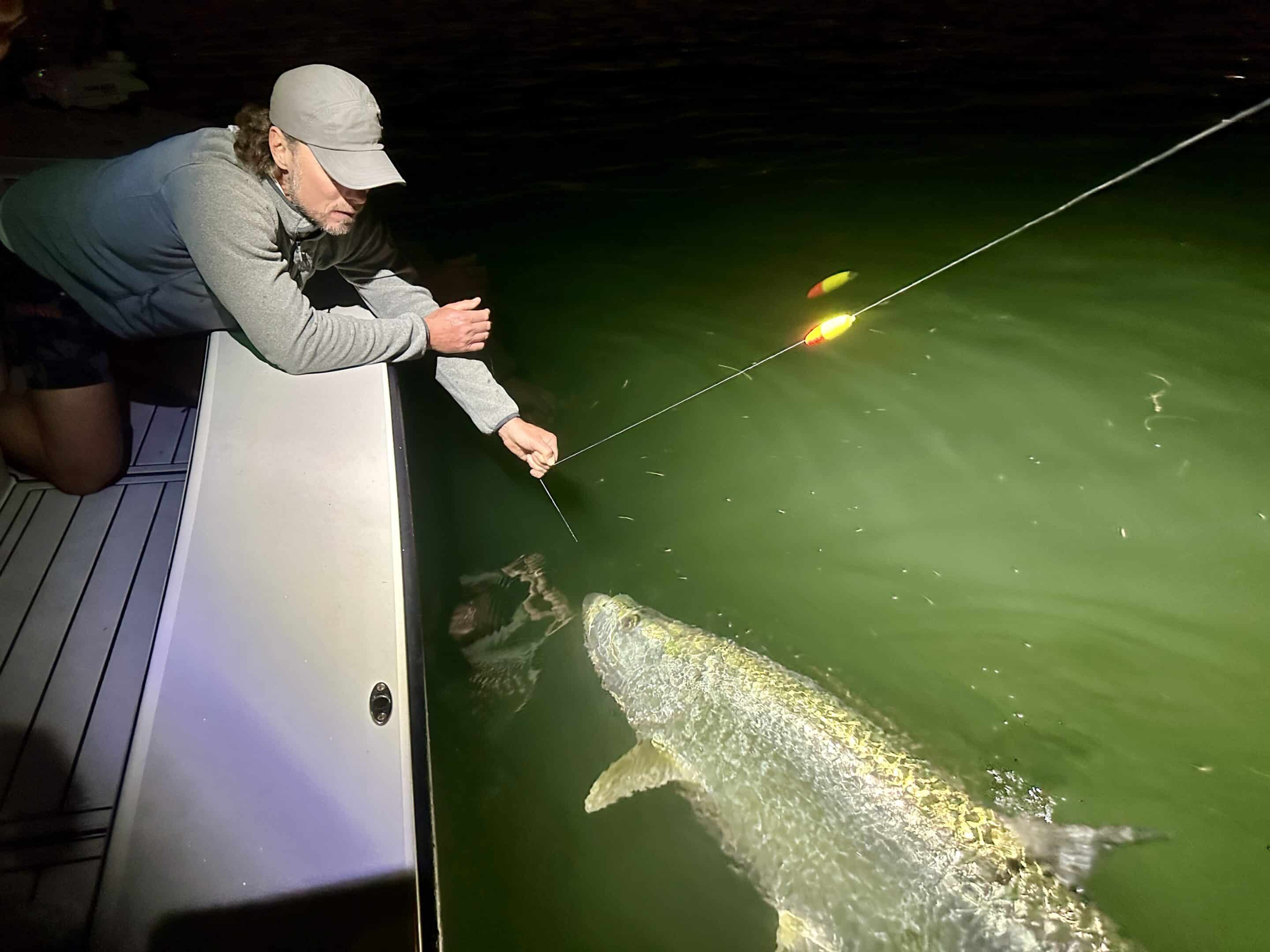
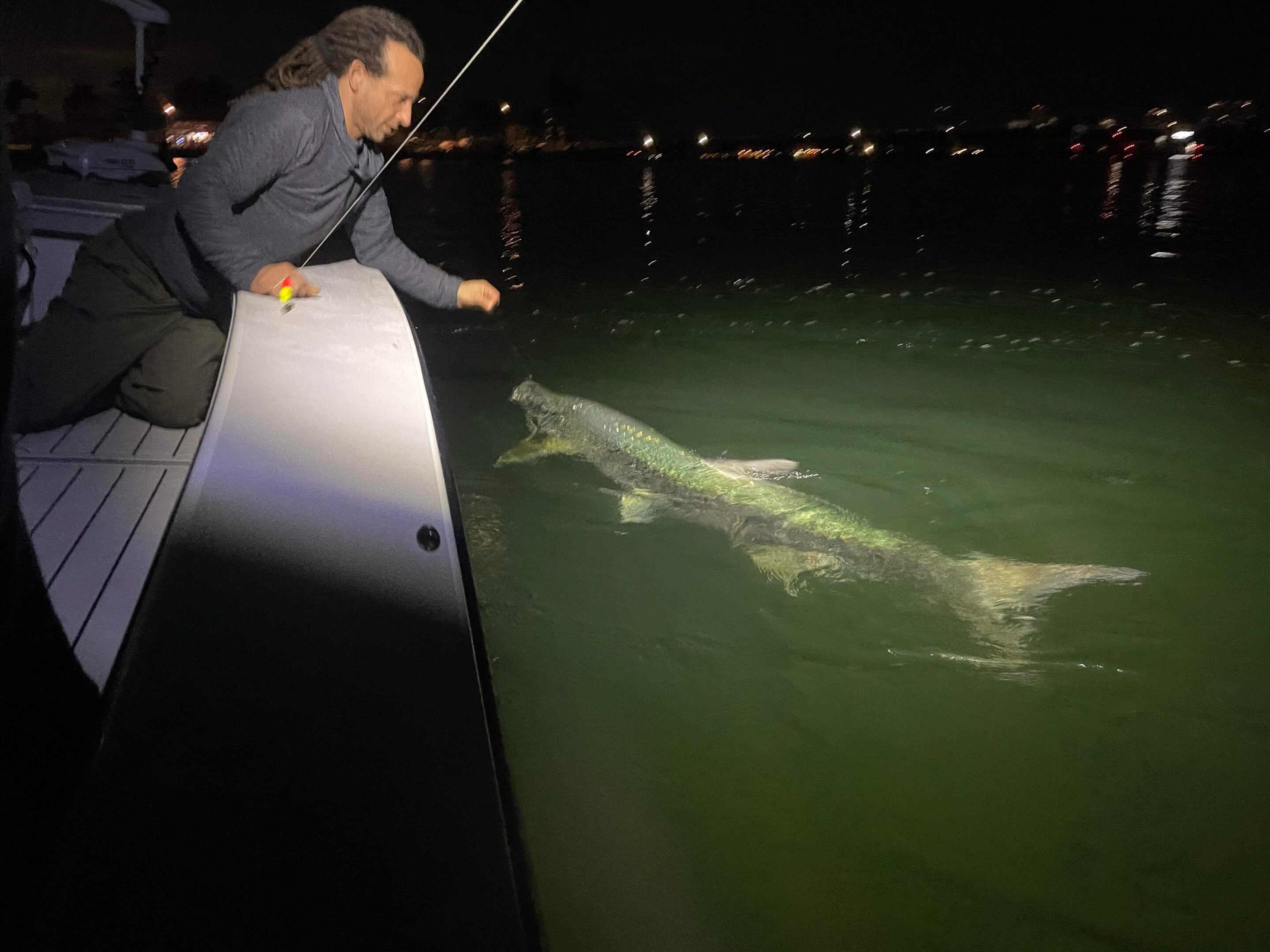
Day 2 – Saturday, Feb 24
We flew from Georgetown, Guyana to Lethem, Guyana where our host, Jules Fredericks of Barefoot Adventures and Eco-tours met us. From there, we picked up some supplies drove to Rewa Eco-lodge where we spent the night.
Day 3 – Sunday, Feb 25
We travelled from Rewa Eco-lodge to Anteater Camp. We fished along the way and later that evening.
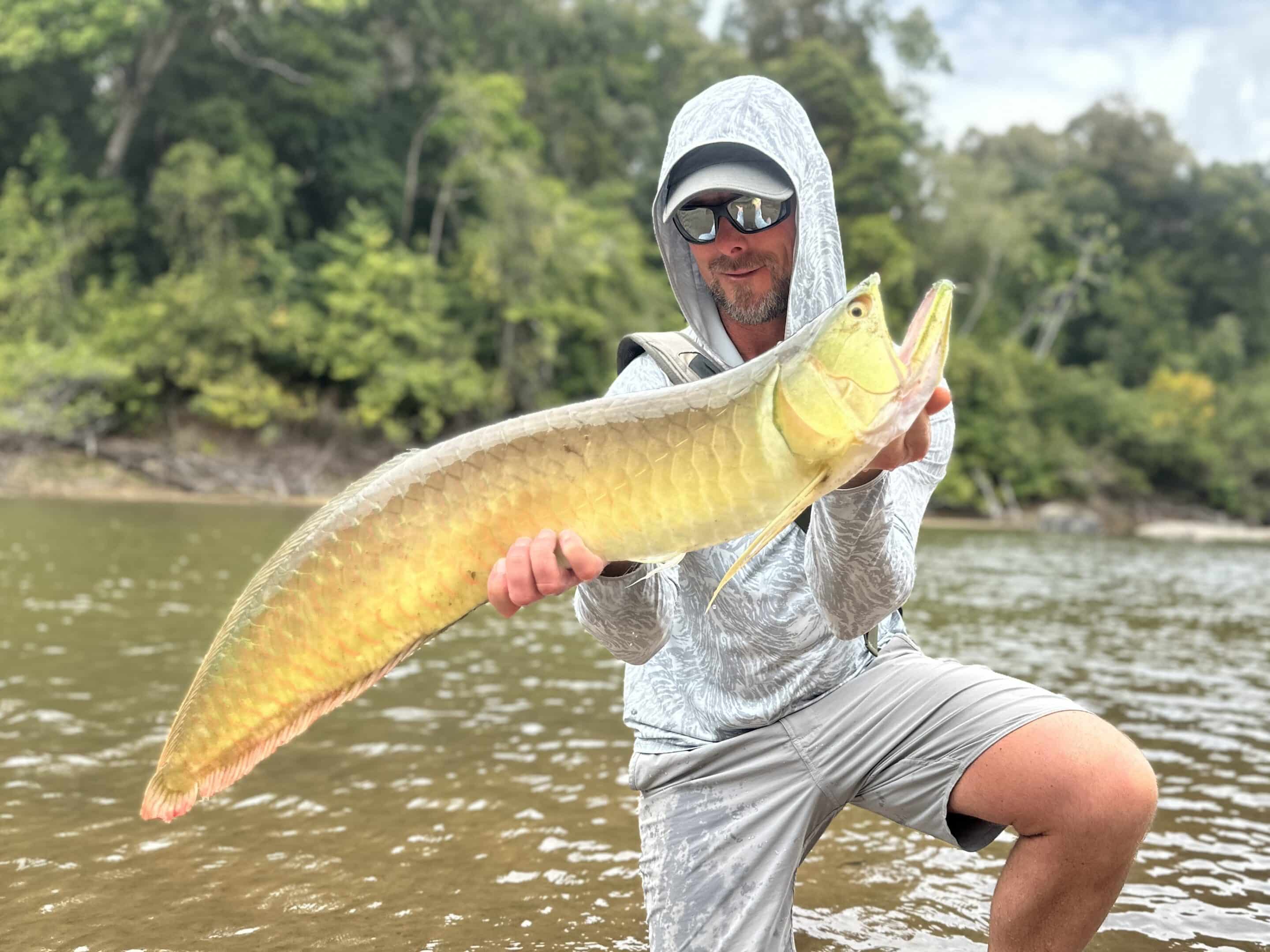
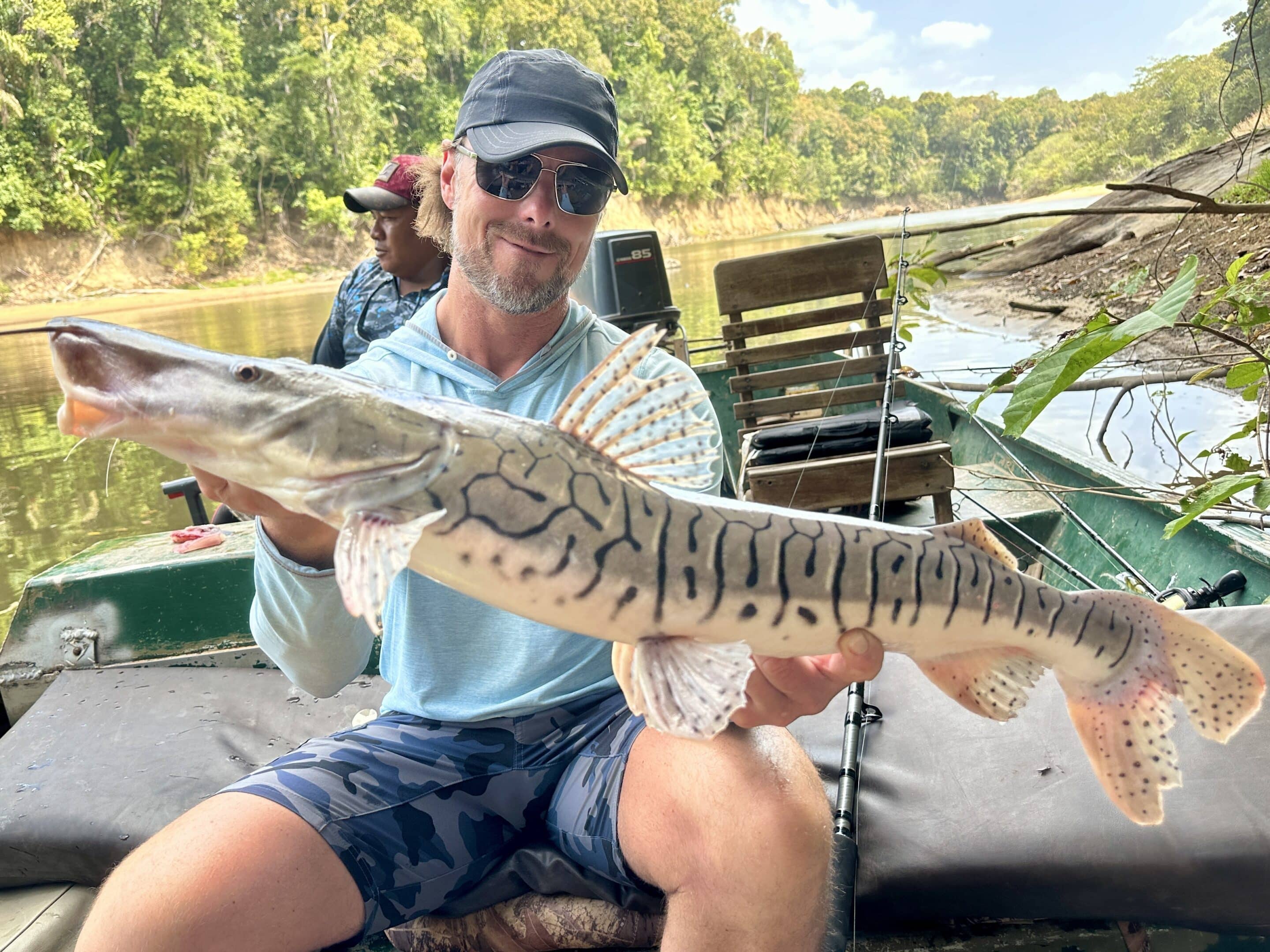
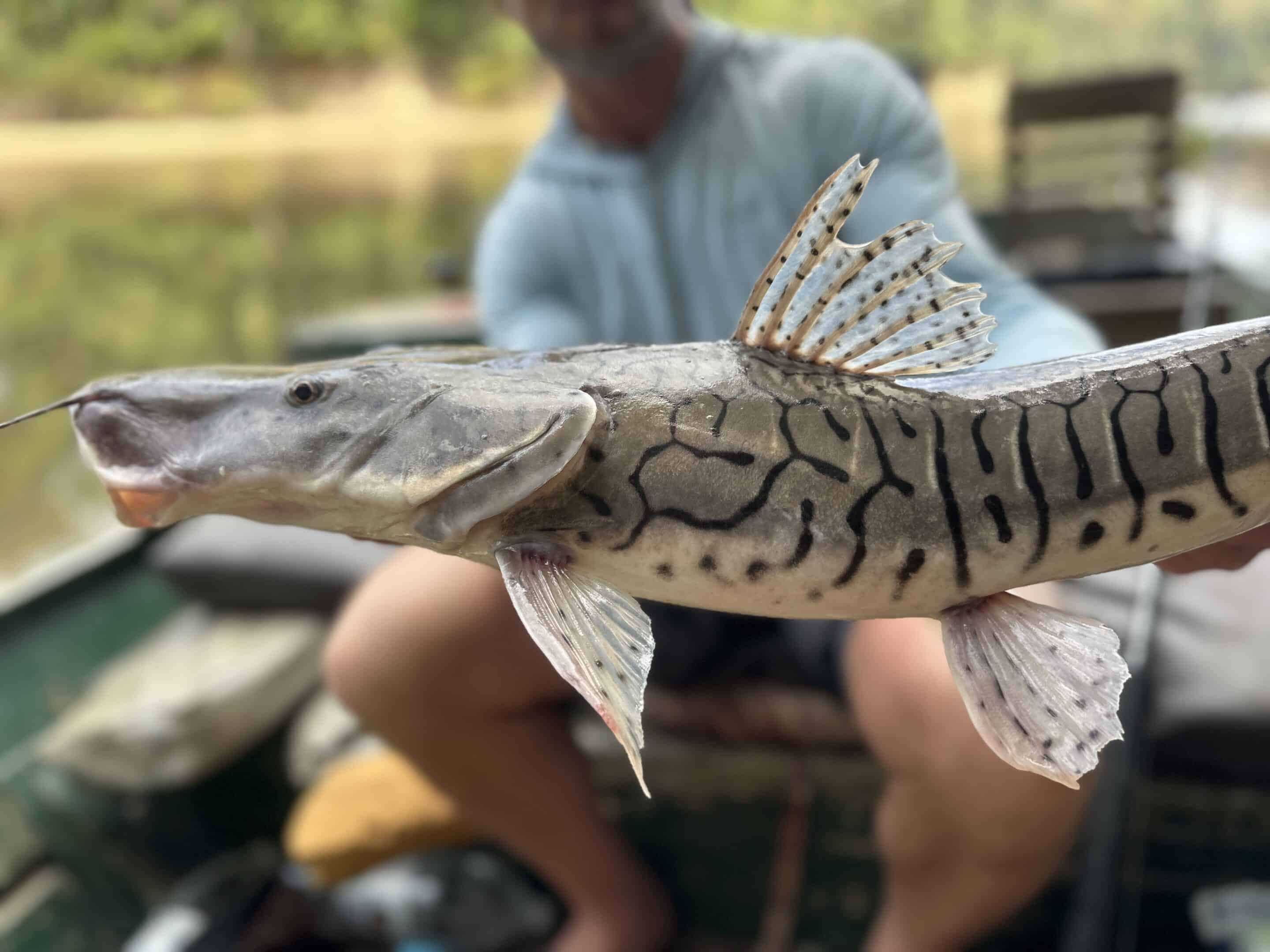
Day 4 – Monday, Feb 26
We fished in some of the deep holes near camp and absolutely slayed. I remember saying someting like, “If what we just experienced is going to be the norm for the trip, things were going to get wild.”
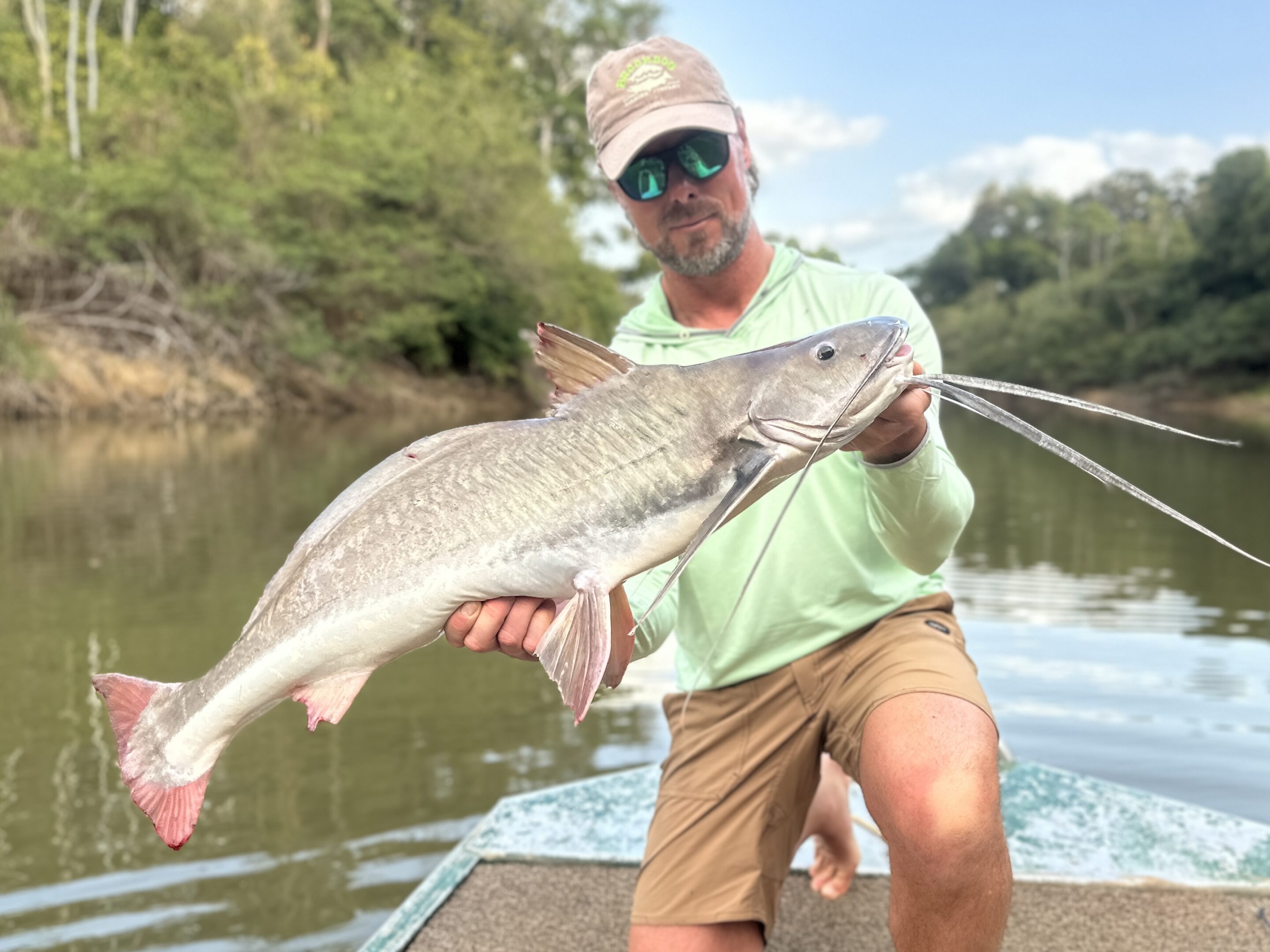
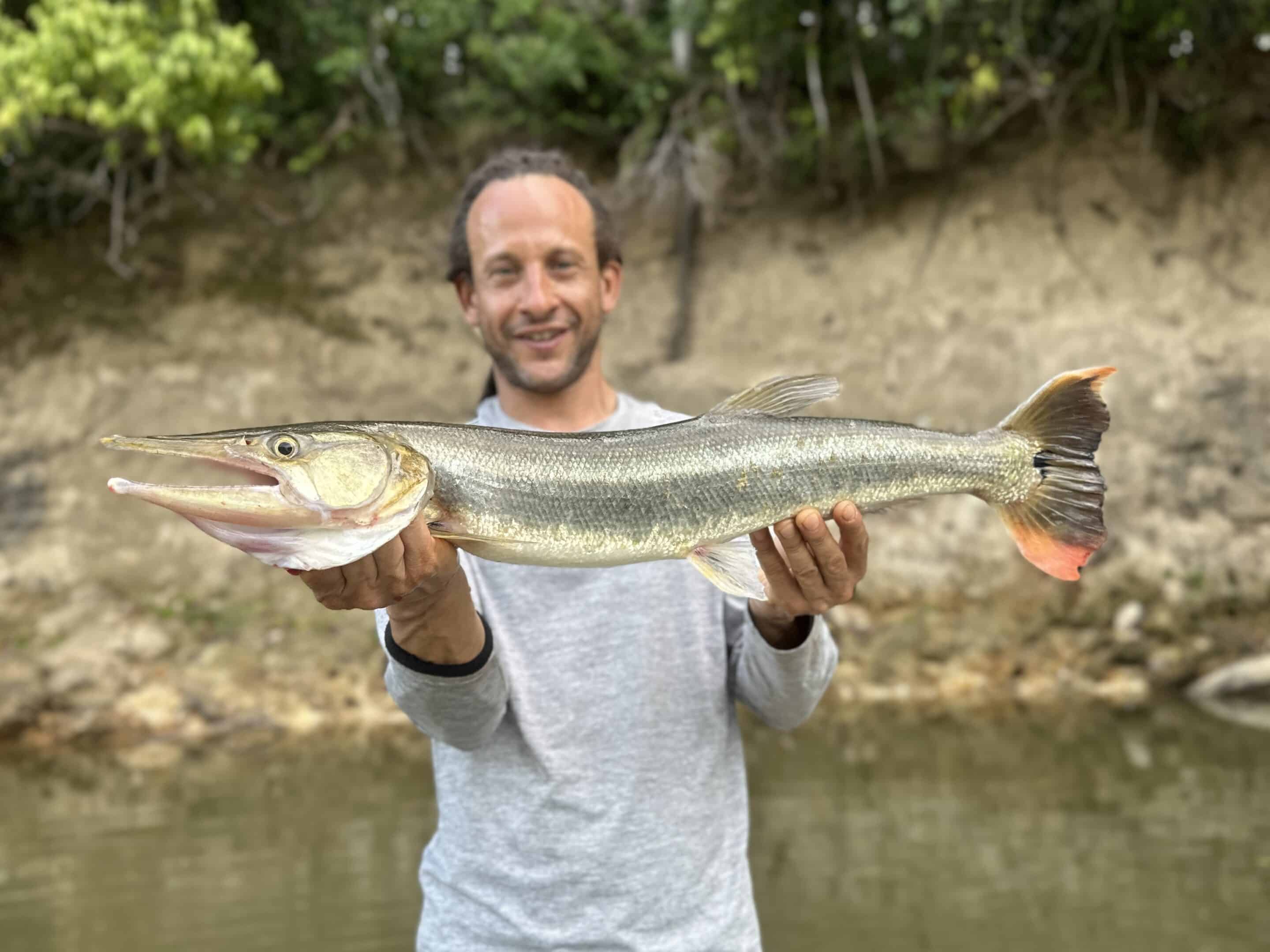
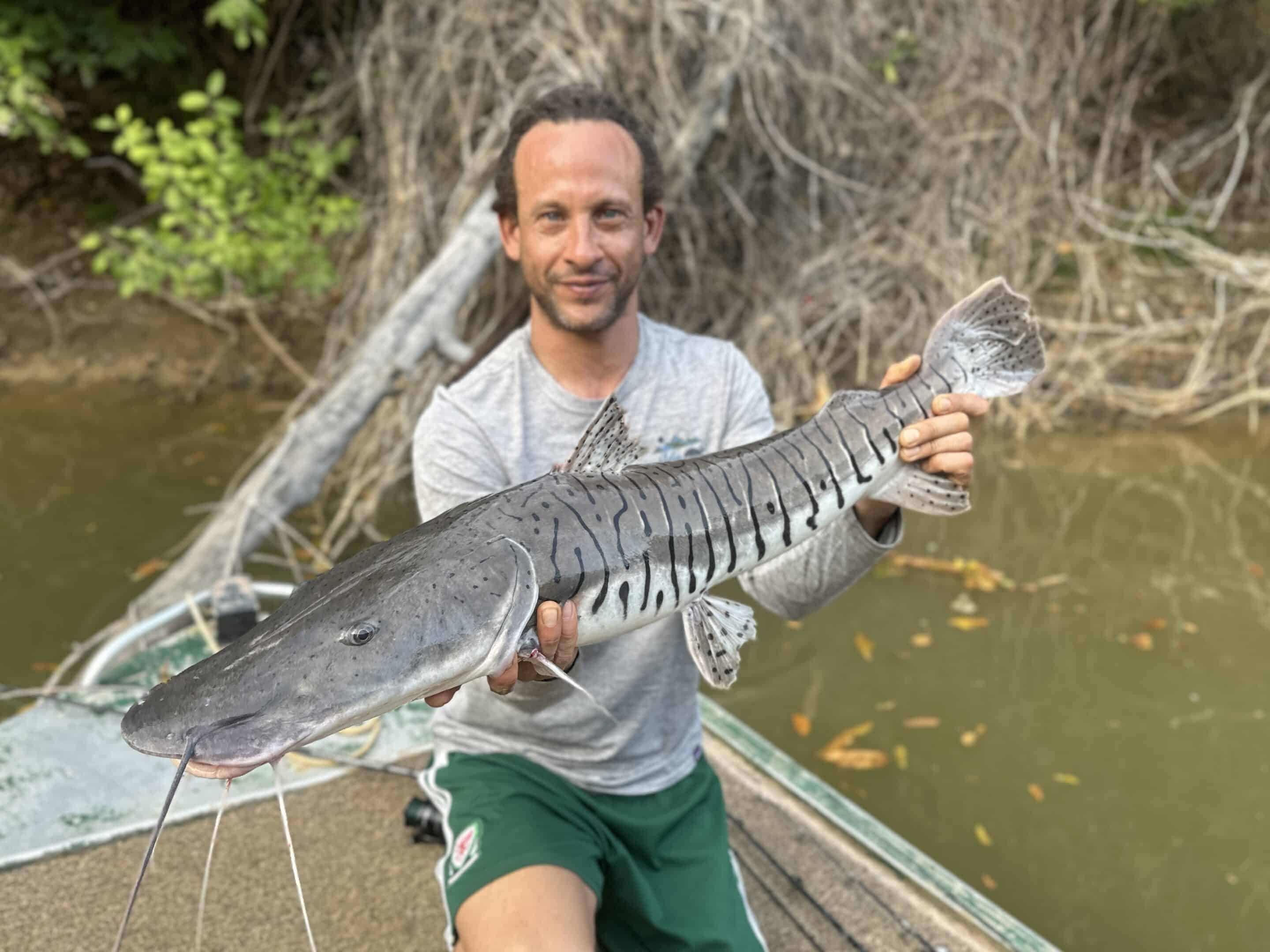
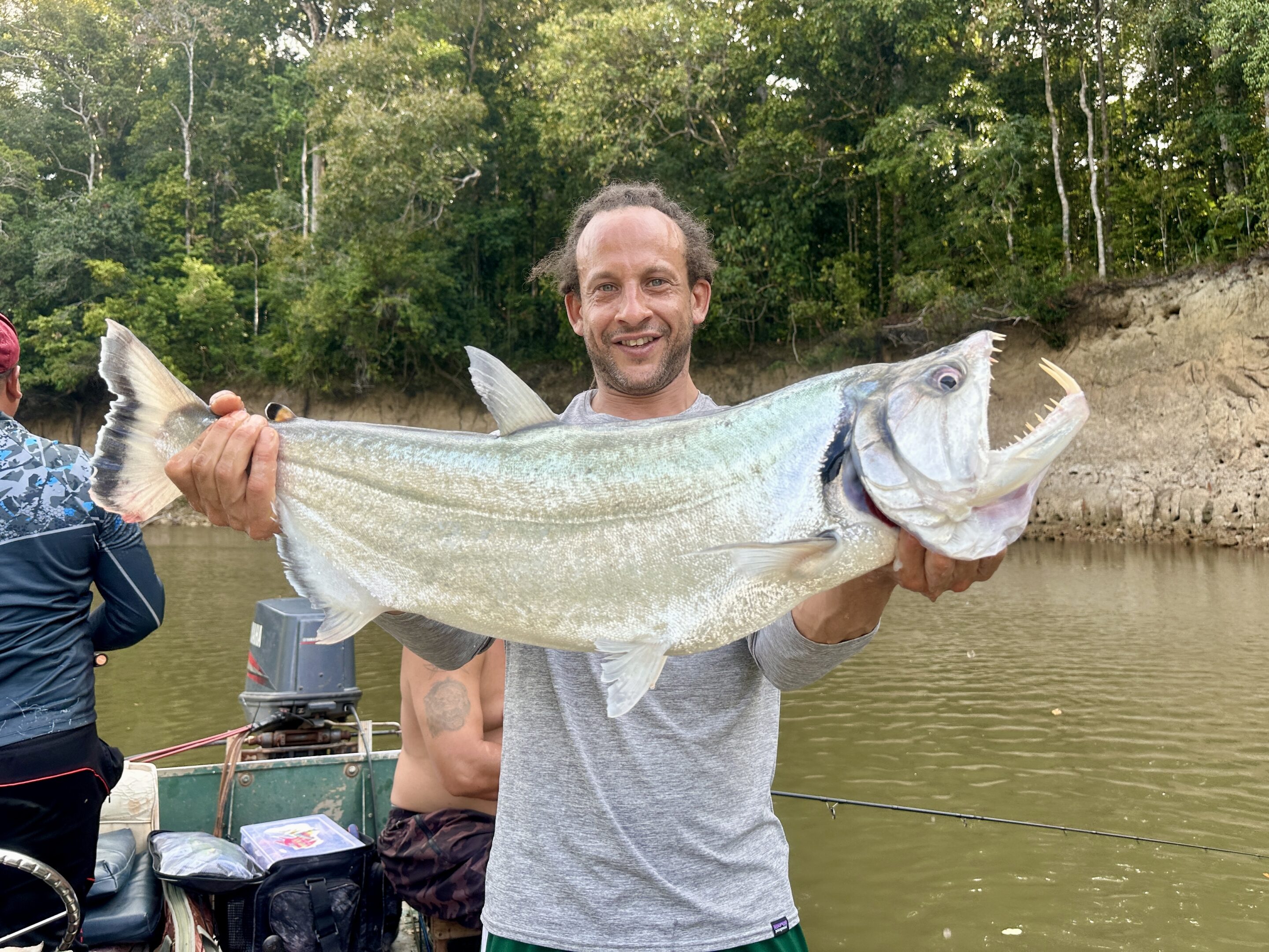
Day 5 – Tuesday, Feb 27
We went upstream for a day, fishing deeper holes as we went. We ended up spending the afternoon fishing a pond that was still connected to the river. We found some peacocks and arowanna around.
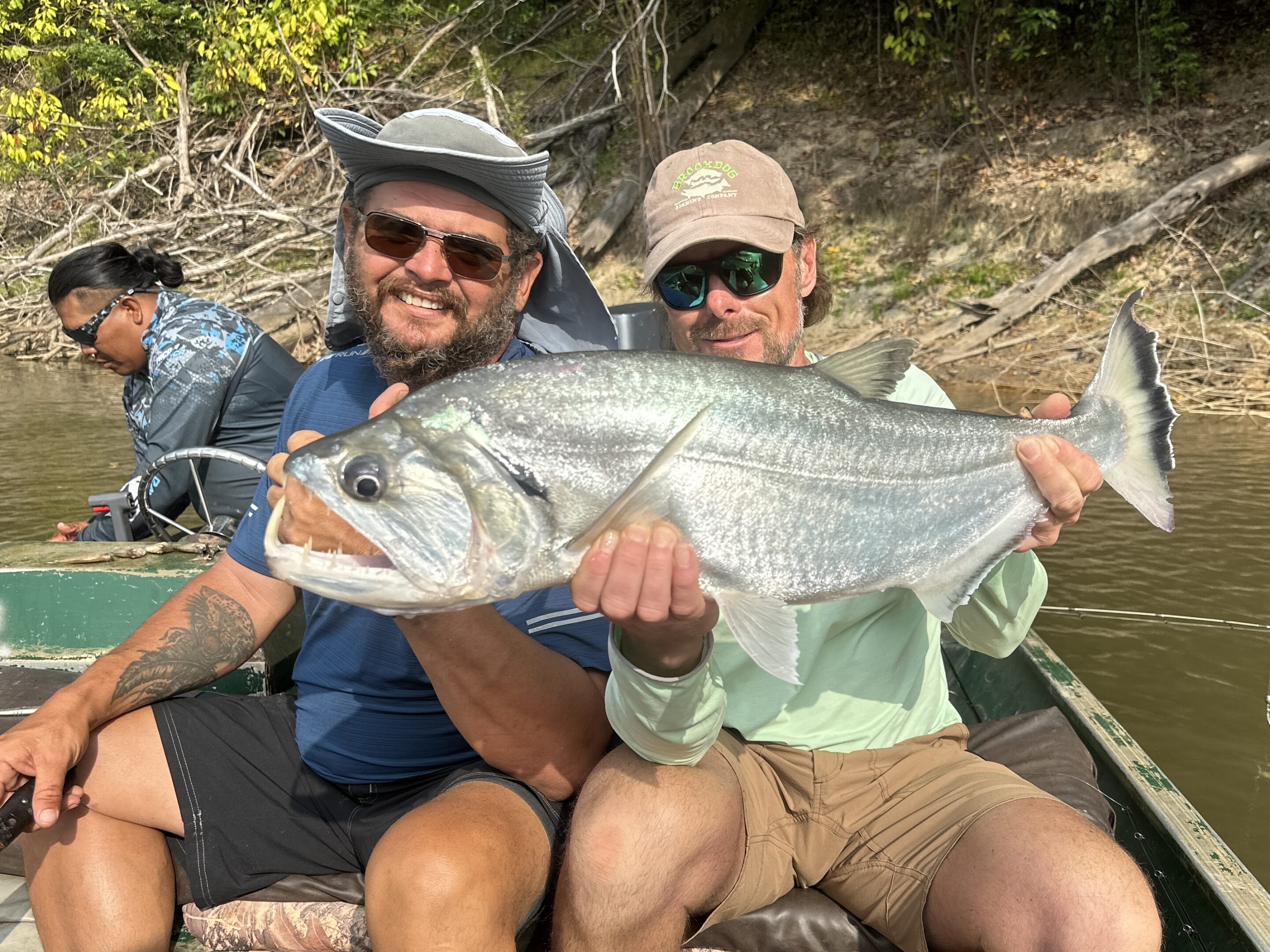
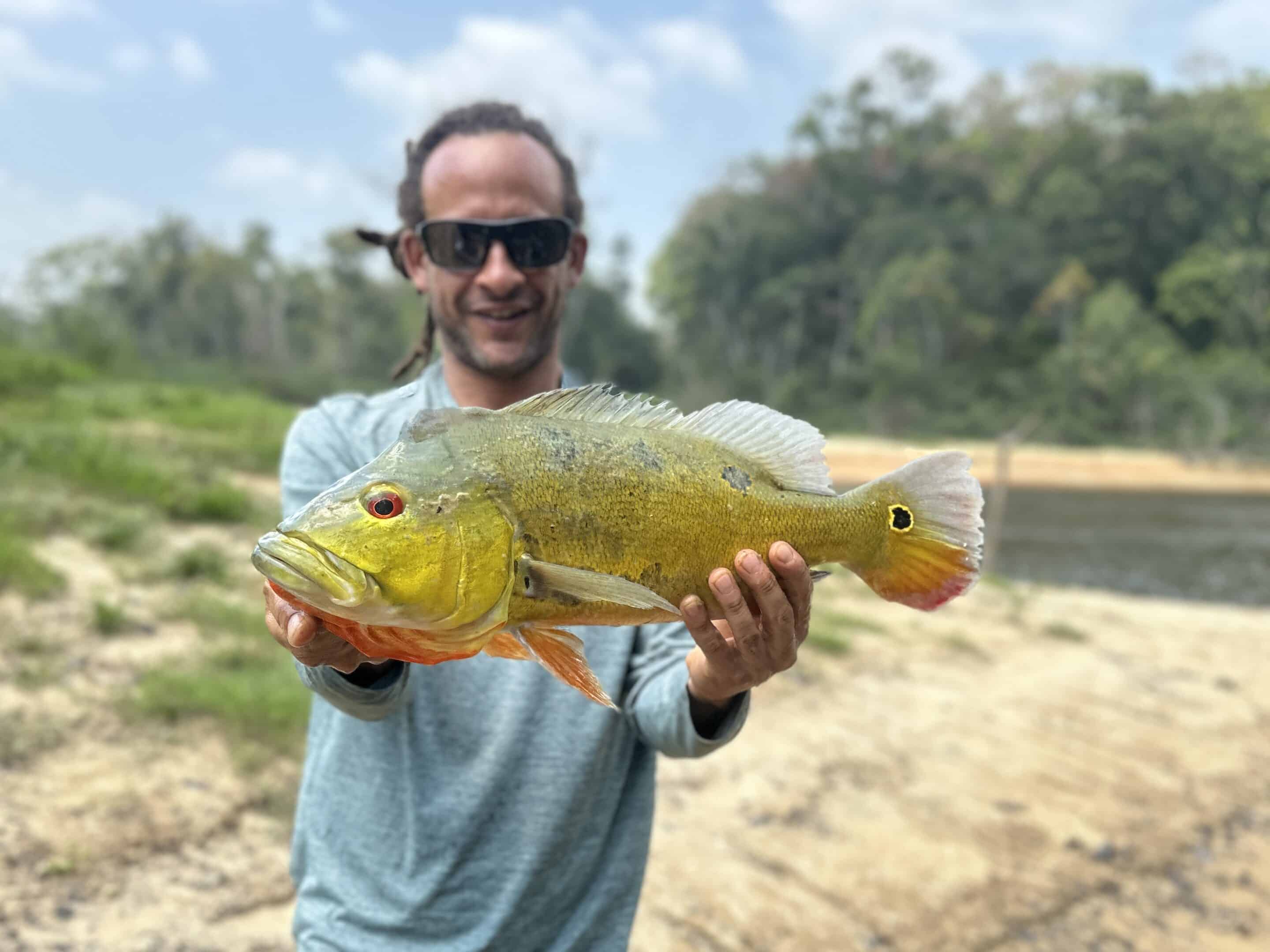
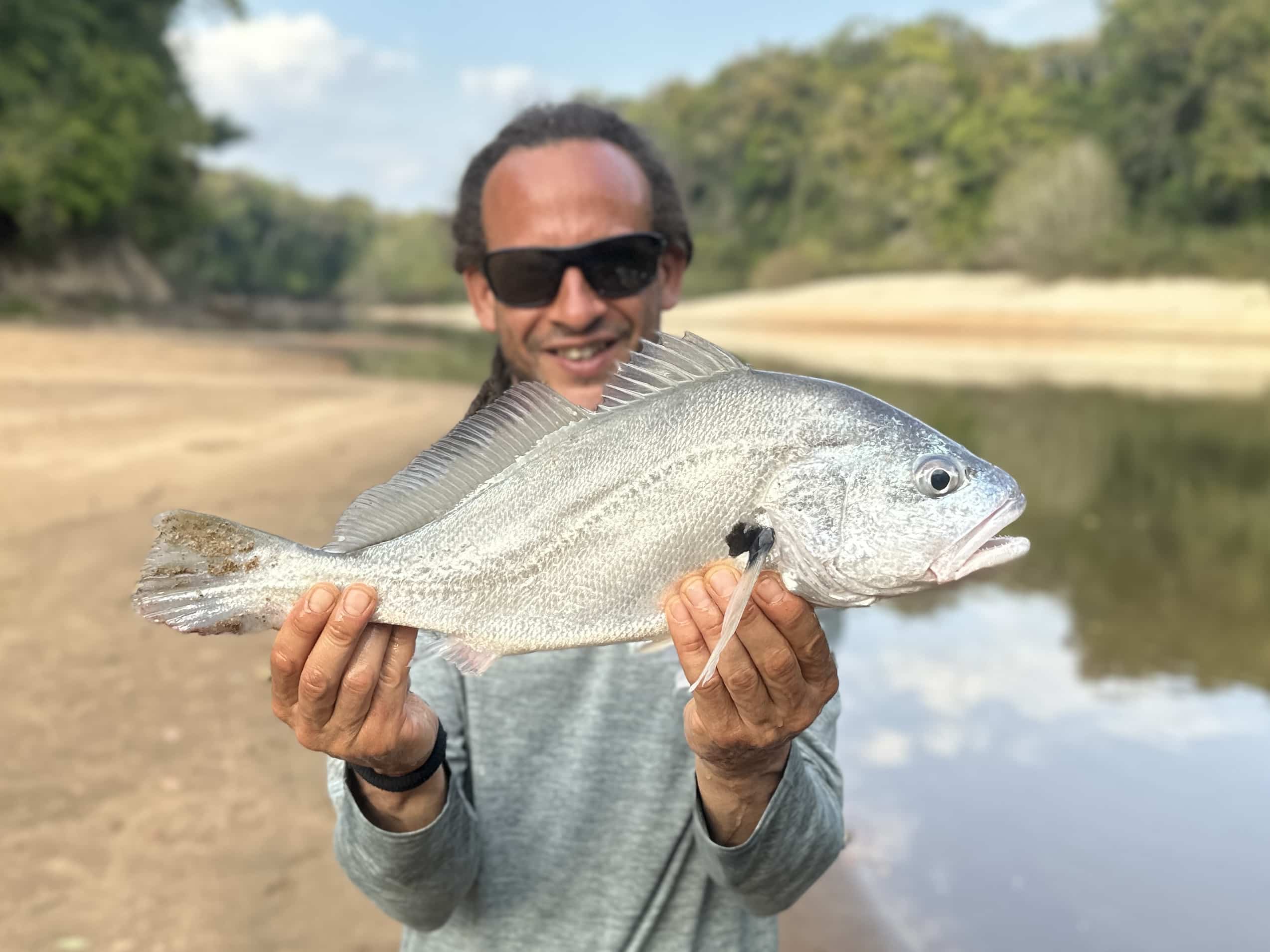
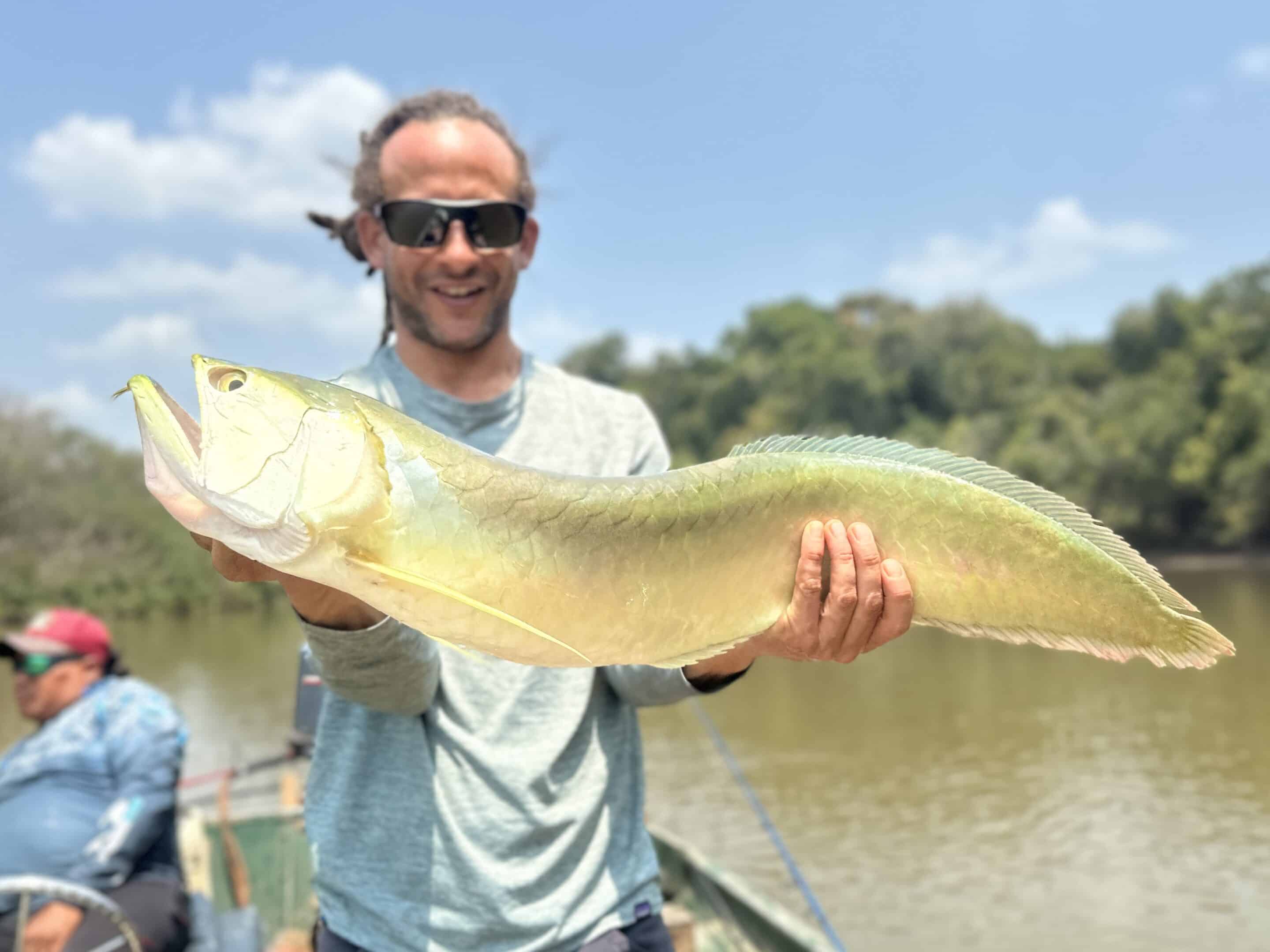
Day 6 – Wednesday, Feb 28
AM – We made the push upsteam to a new camp that the team built for us. They did an incredible job. Here’s a link to a video of the location – https://youtu.be/g8UBgY_EgUE?feature=shared. PM – fished near camp. Incredible action all evening.
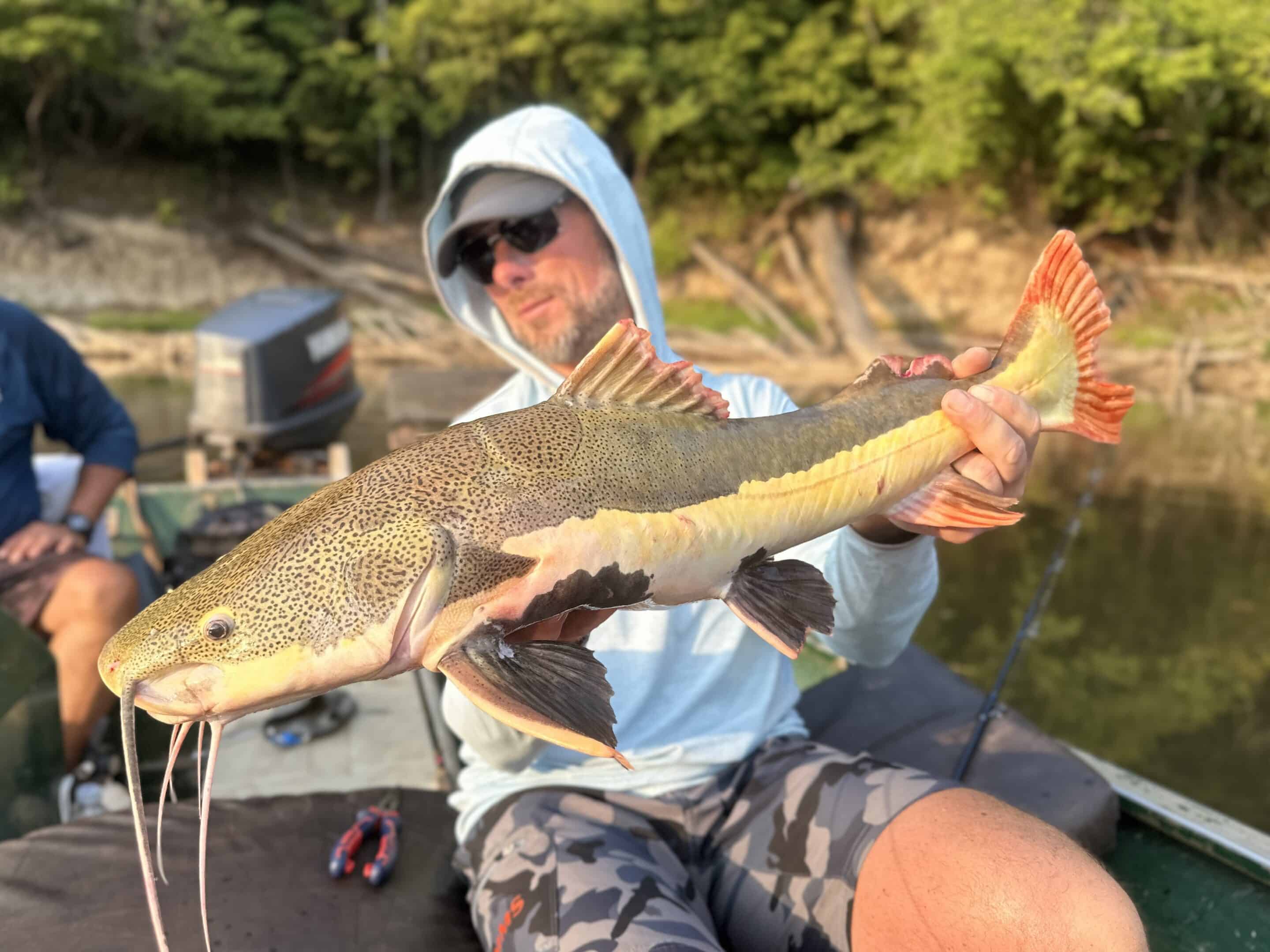
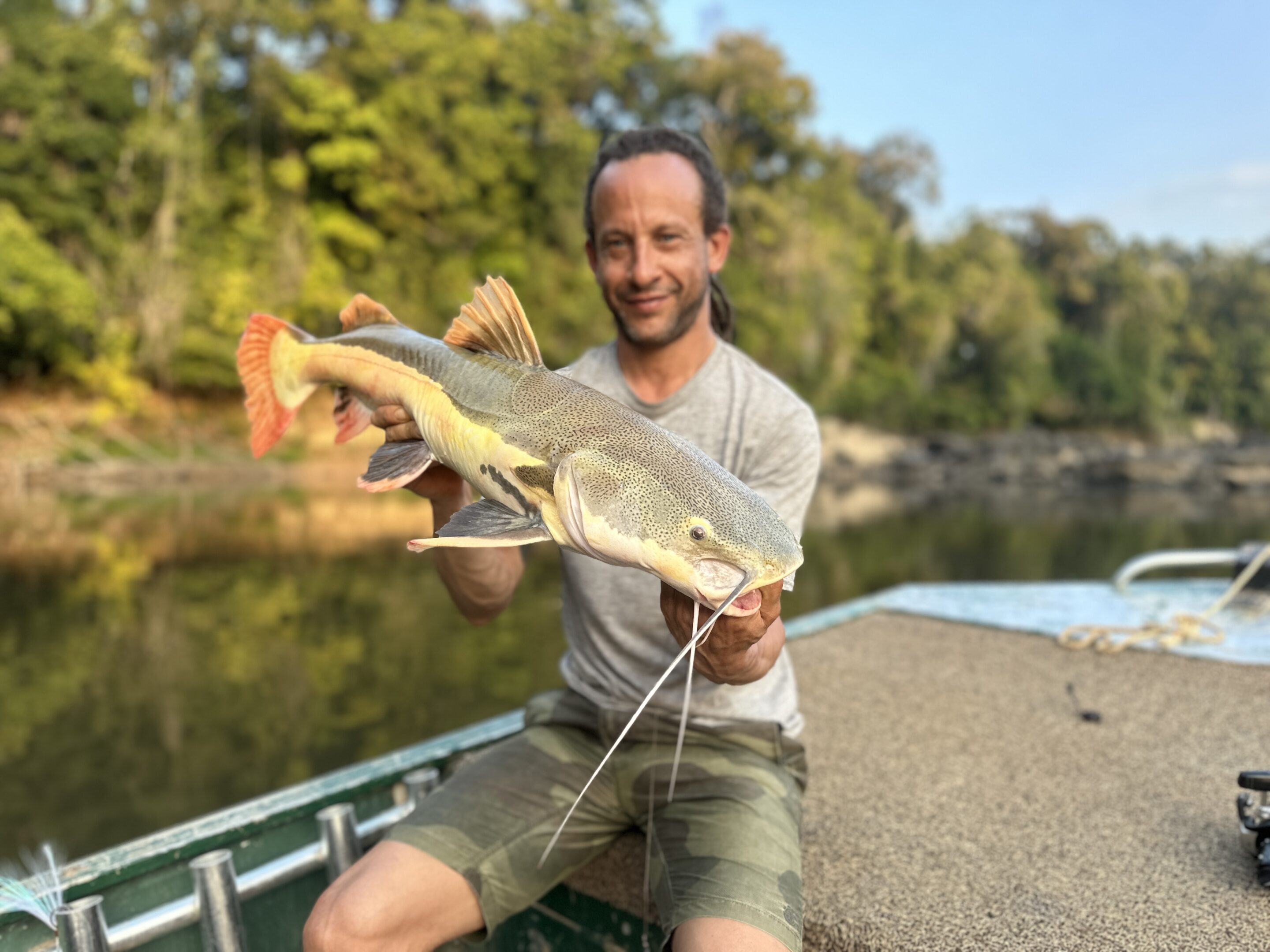
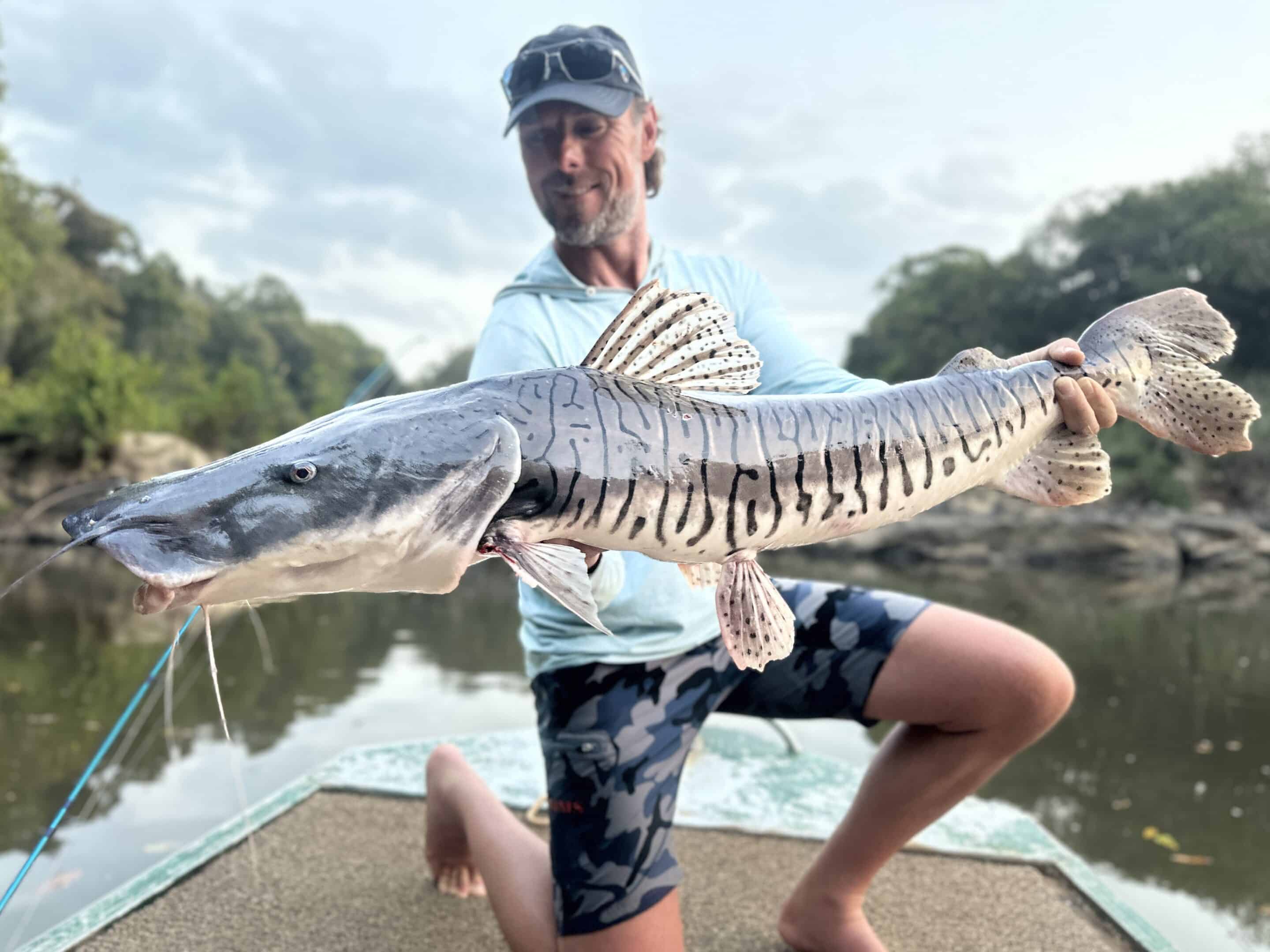
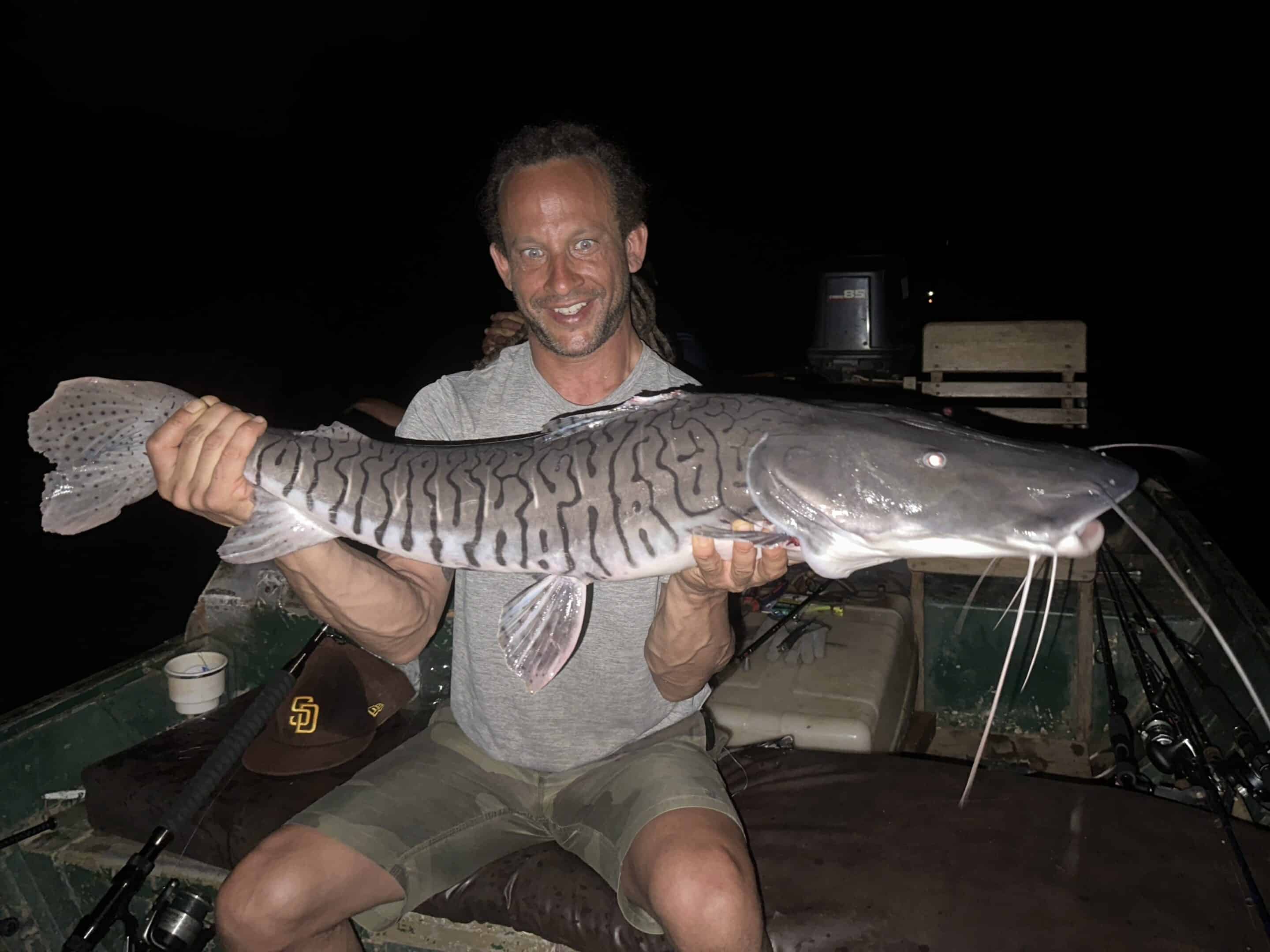
Day 7 – Thursday, Feb 29
This day was a special treat for both Jay and I. Prior to the trip, we asked the guides if they could put us on some Himara (wolffish). Until recently, they weren’t much of a target species for the guides – not many folks even asked if they were around. Well, prior to our arrival, the boys did some recon work and found a lot of them in a creek close to where we camped.
Action was, yet again, insane – we landed dozens of them. Those fish smash top-water baits with reckless abandon. Here’s a link to a short video that shows what I’m talking about: https://www.youtube.com/watch?v=CGRbD9ZLPlA.
You’ll notice from the video and photos that we were fishing in heavy timber. It added to the excitement and challenge. I lost a monster under a log that broke my heart. Terry, my guide for the day, promised me that revenge would come.
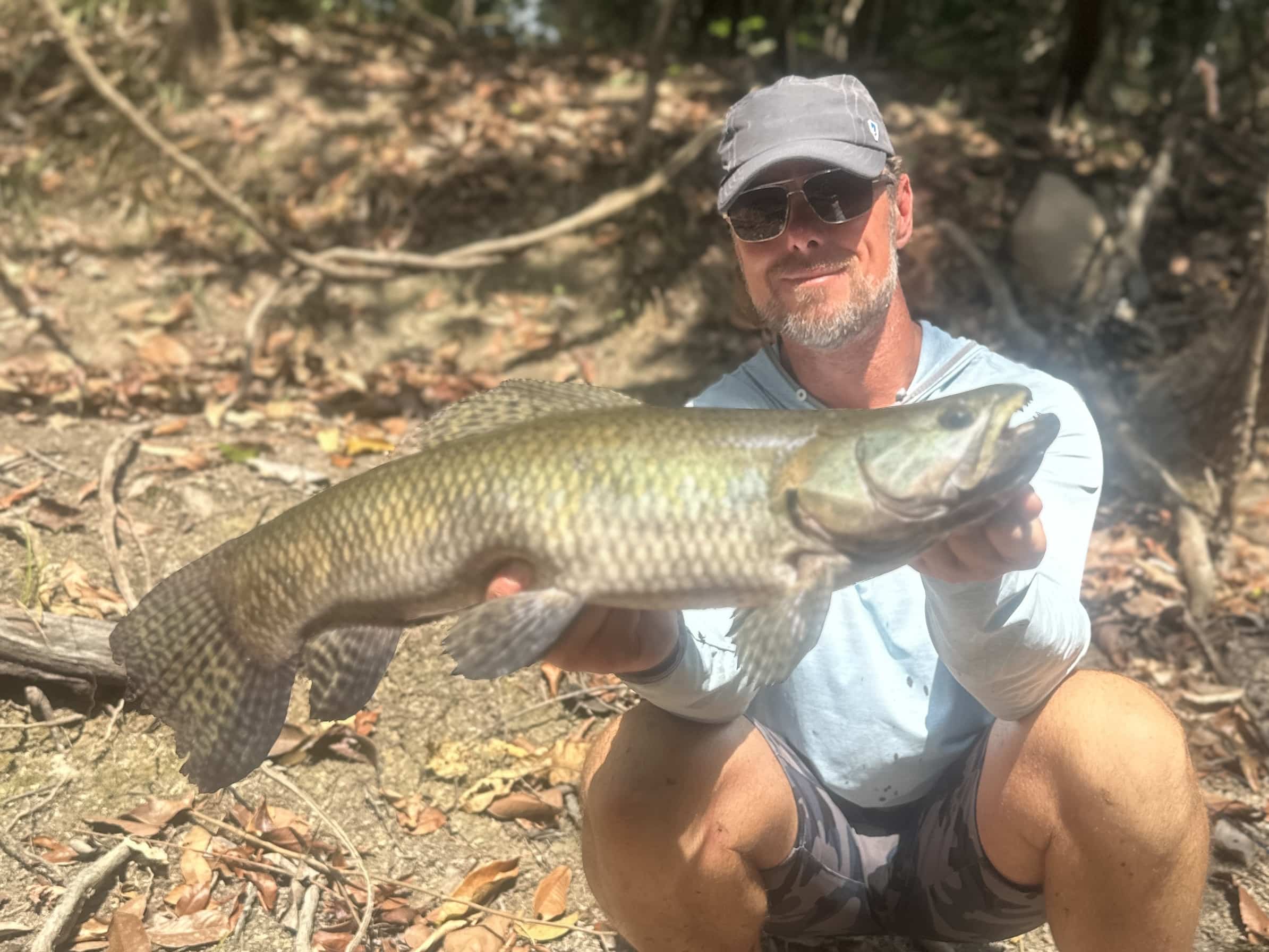
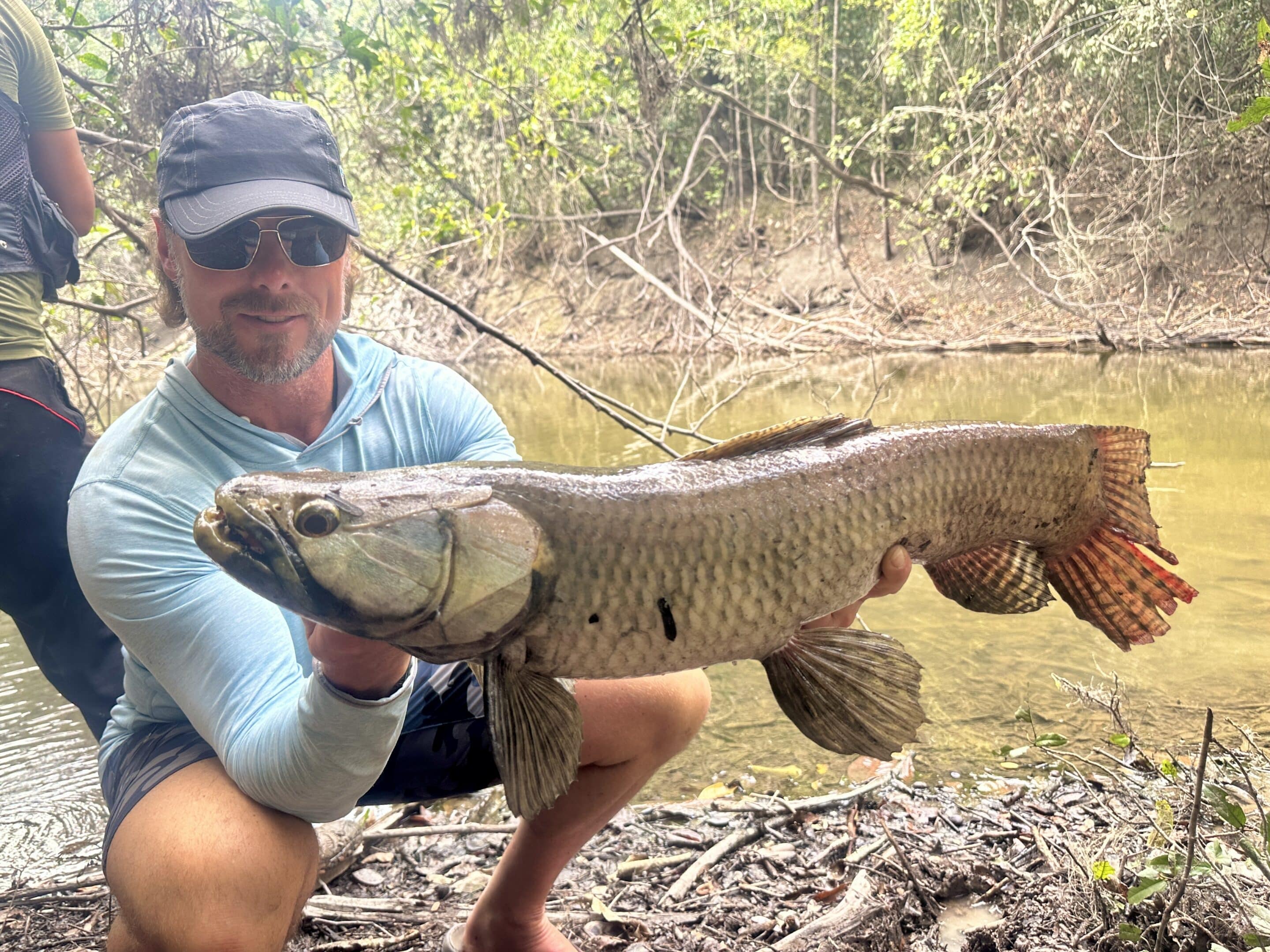
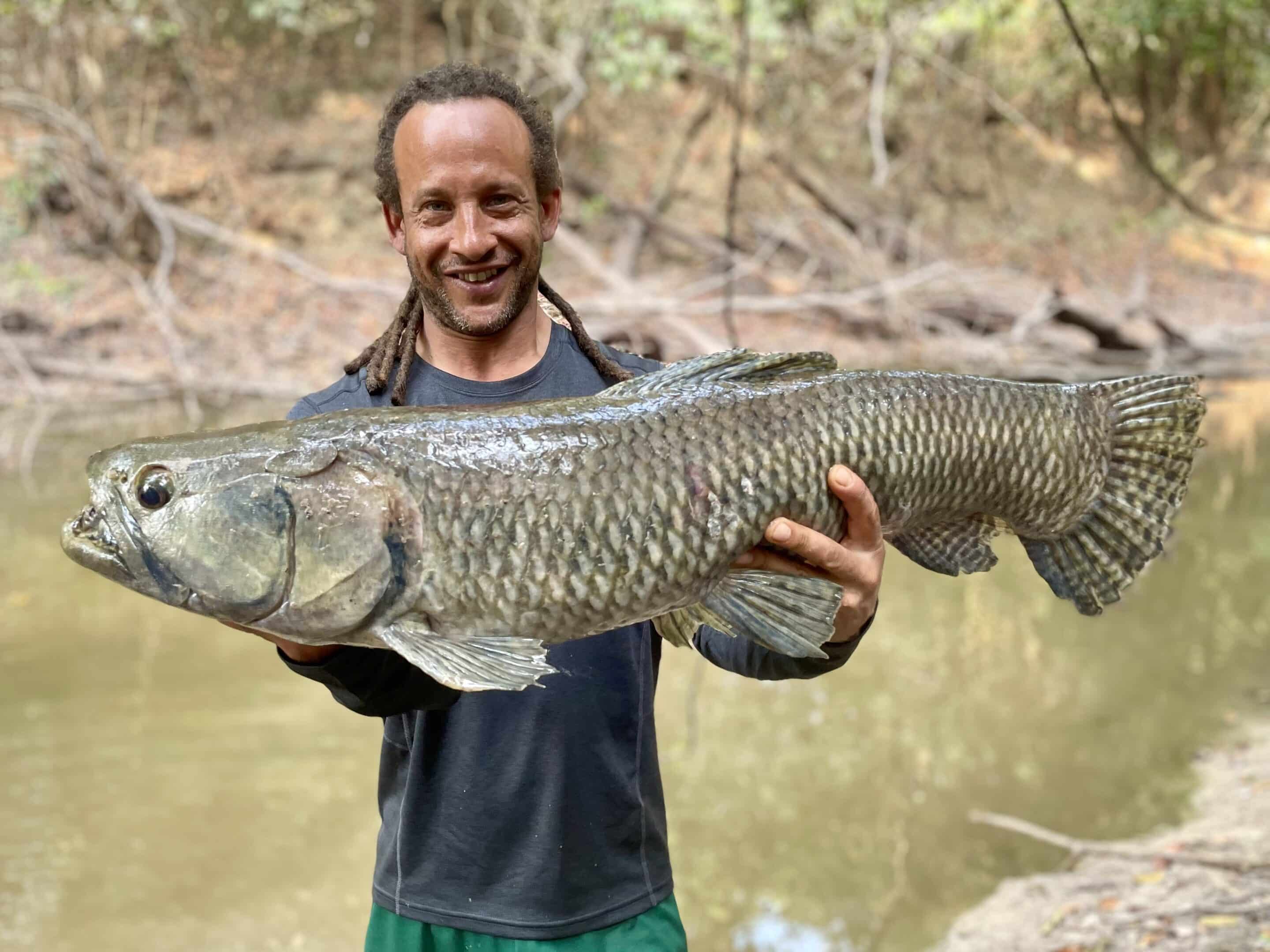
All that hiking through the jungle in pursuit of himara had us exhausted by noon. So, we returned to camp for a short siesta and celebration of a new species. Later that evening, we went out in the boat and fished some deep holes close to camp. The payara action was wild.
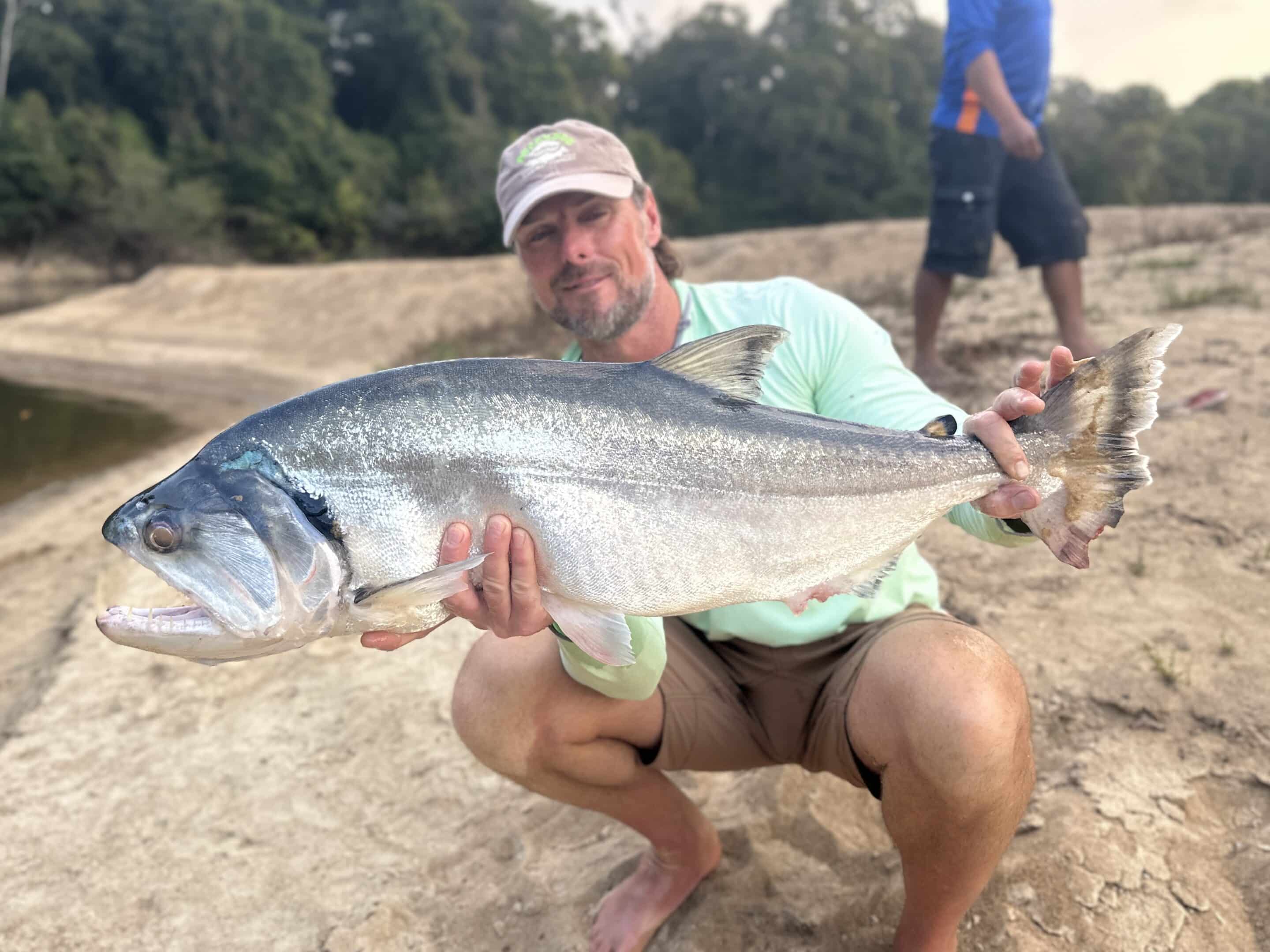
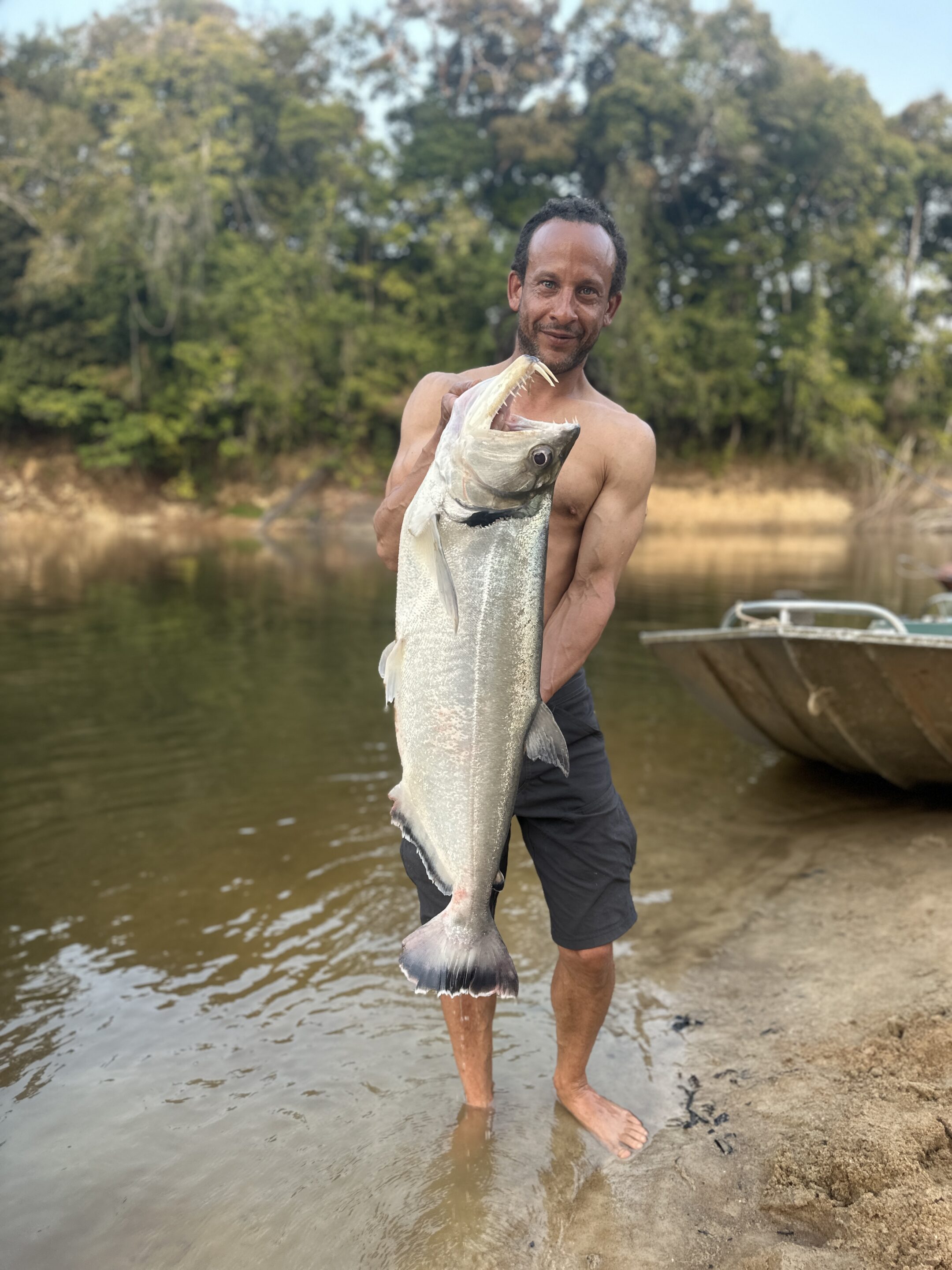
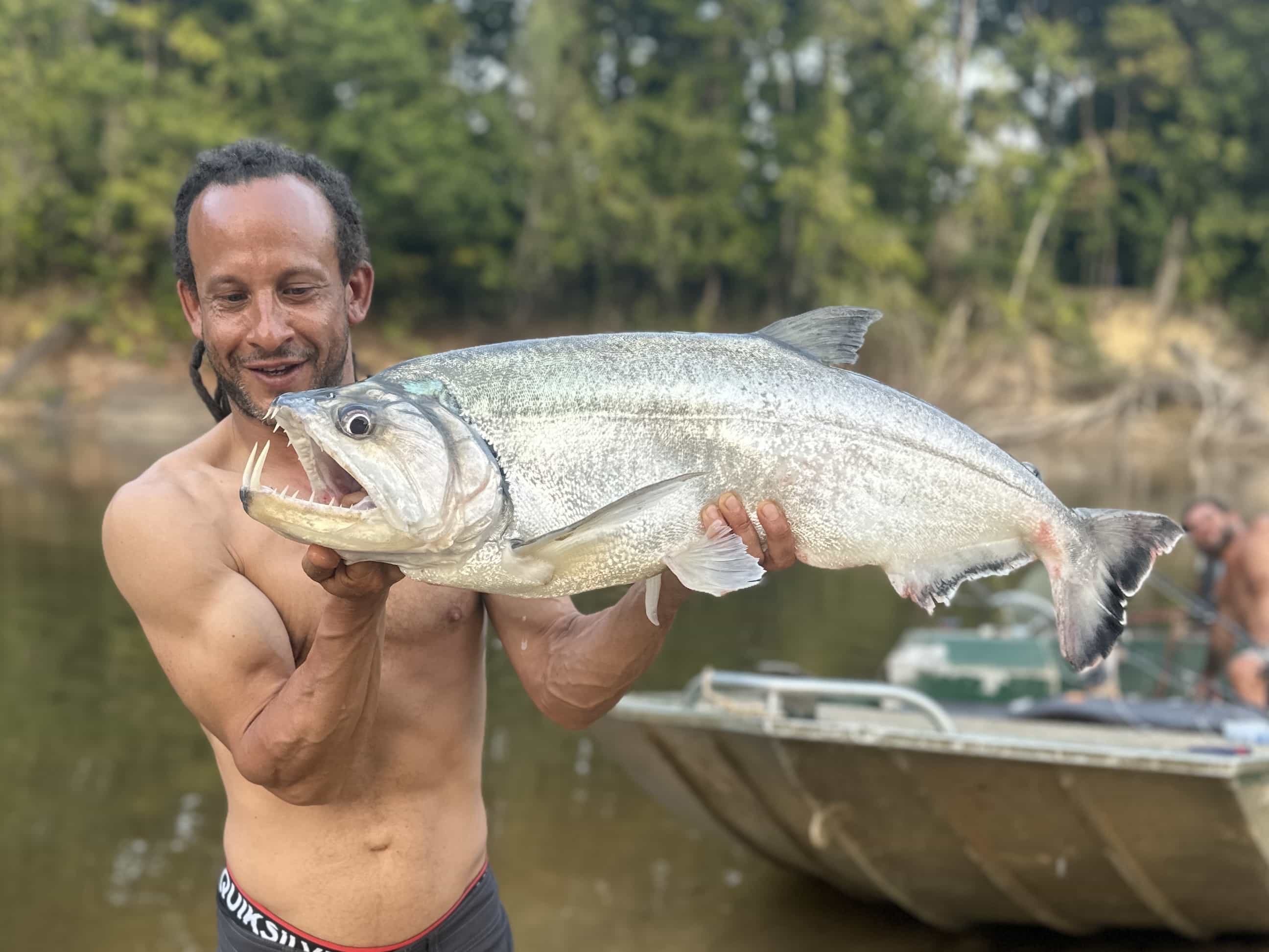
Day 8 – Friday, Mar 1
If there is such a thing as a slow day in the jungles of Guyana, this was one of them. By this point, the adrenaline waned a bit and we finally got into the flow of Mother Nature. We took it easy and experimented with a few new tactics with a little bit of success. We didn’t take many pics but here’s a couple.
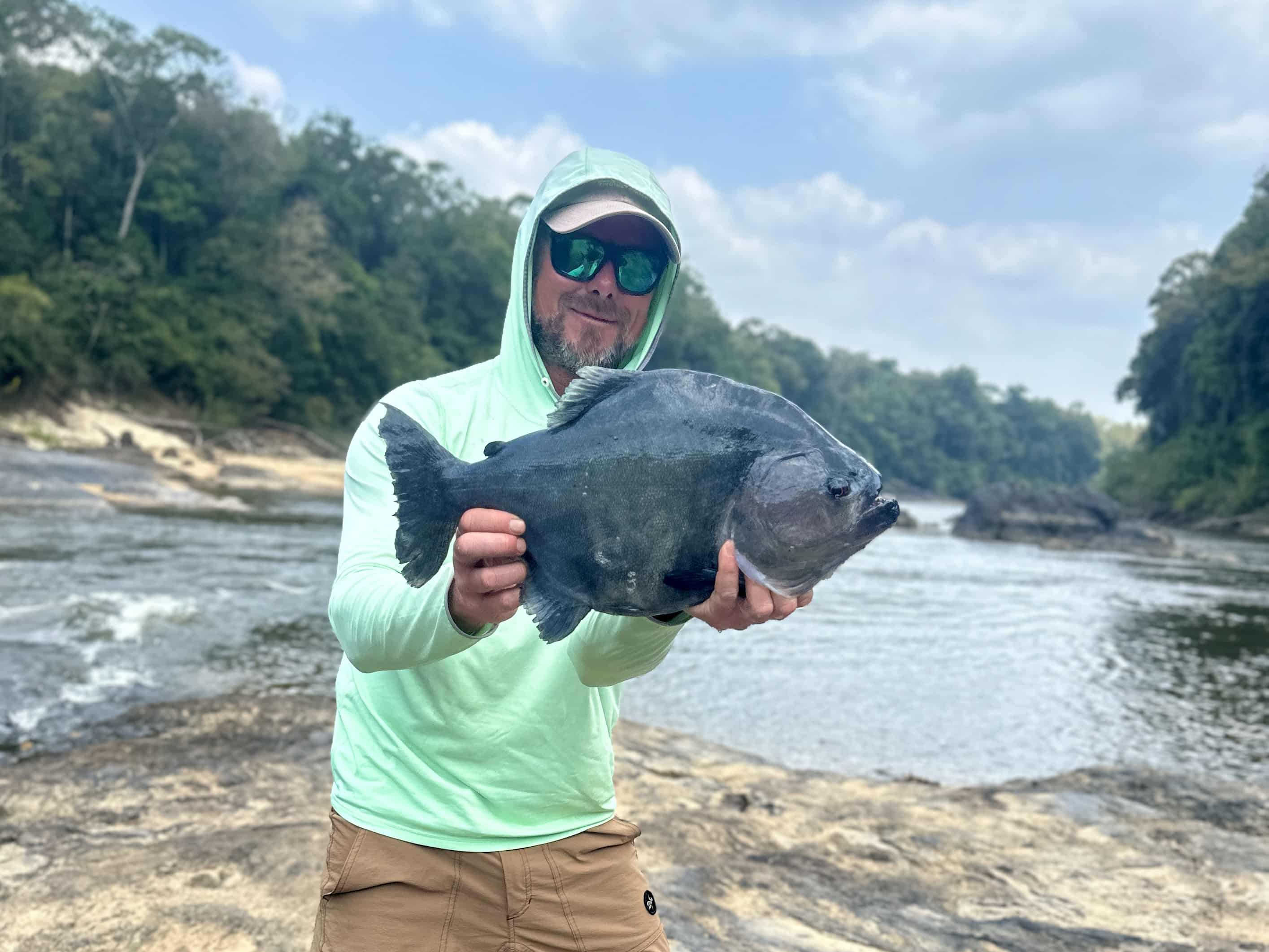
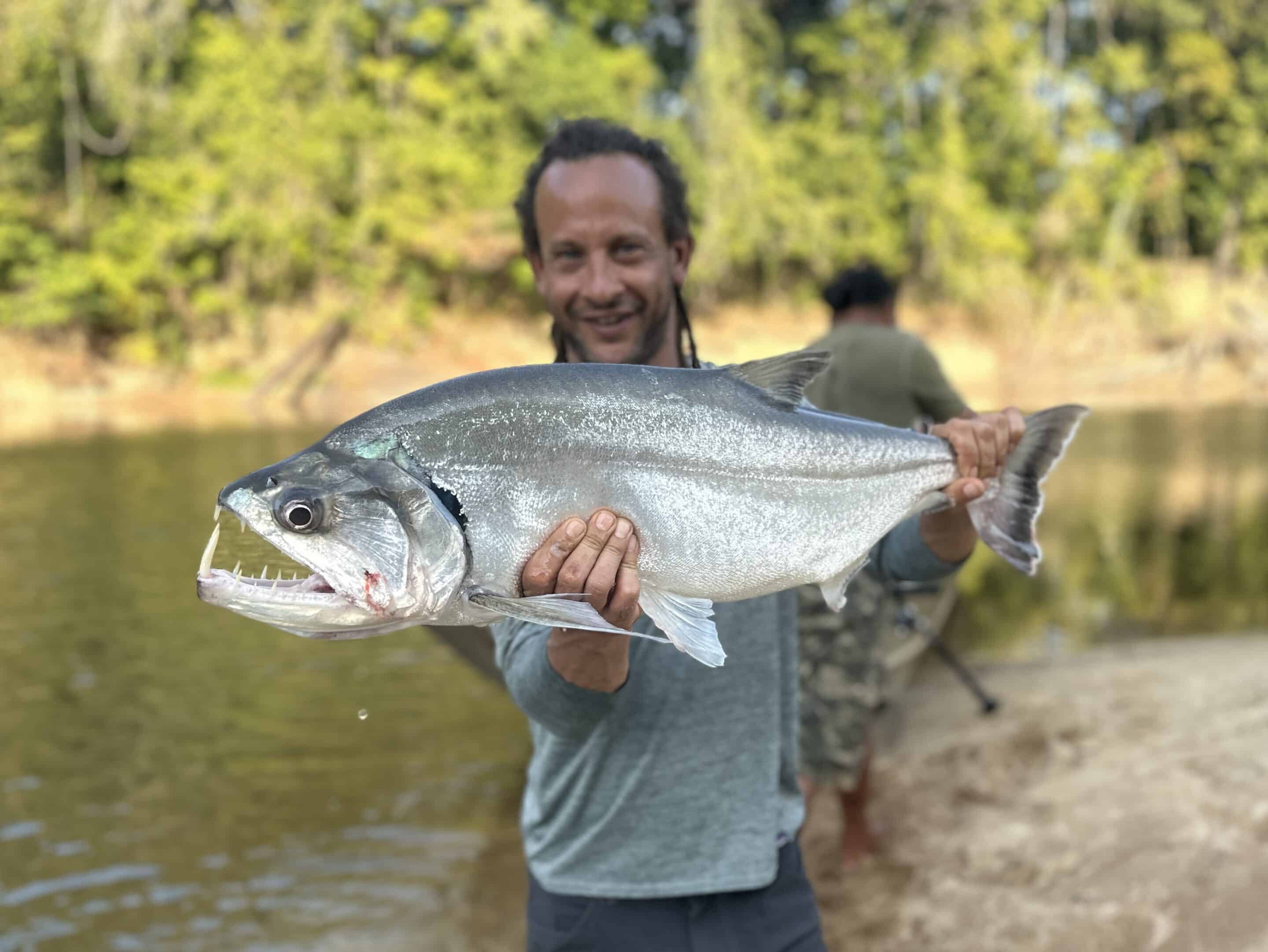
Day 9 – Saturday, Mar 2
AM – it was time to get revenge on that beast himara that broke me off. So, we ventured back into the jungle to find it. The water dropped a few inches from when we were there last and the fish moved around a bit. Once we found them, it was game on. And yes, I’m pretty sure I got that beast I lost a couple days prior.
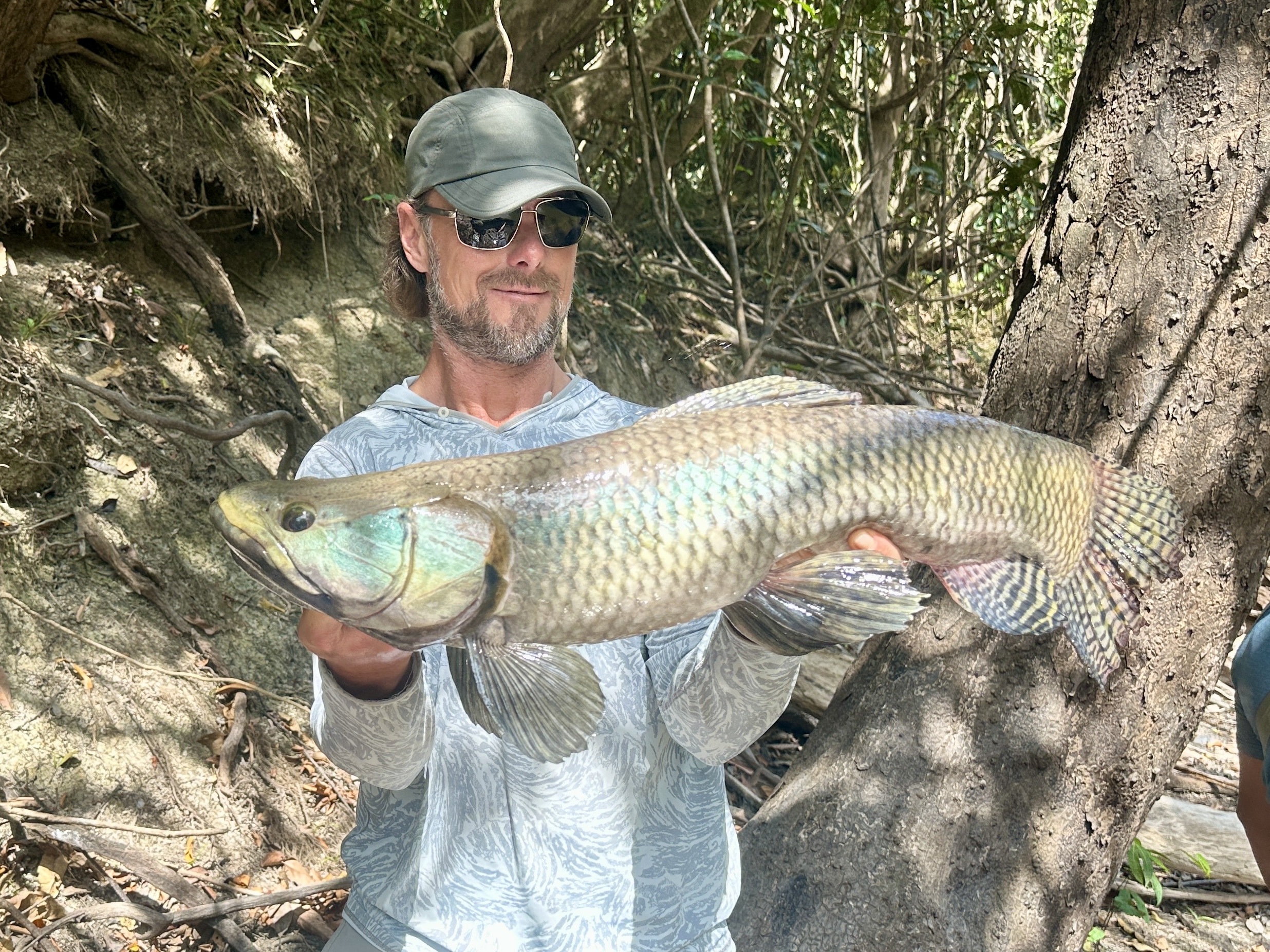
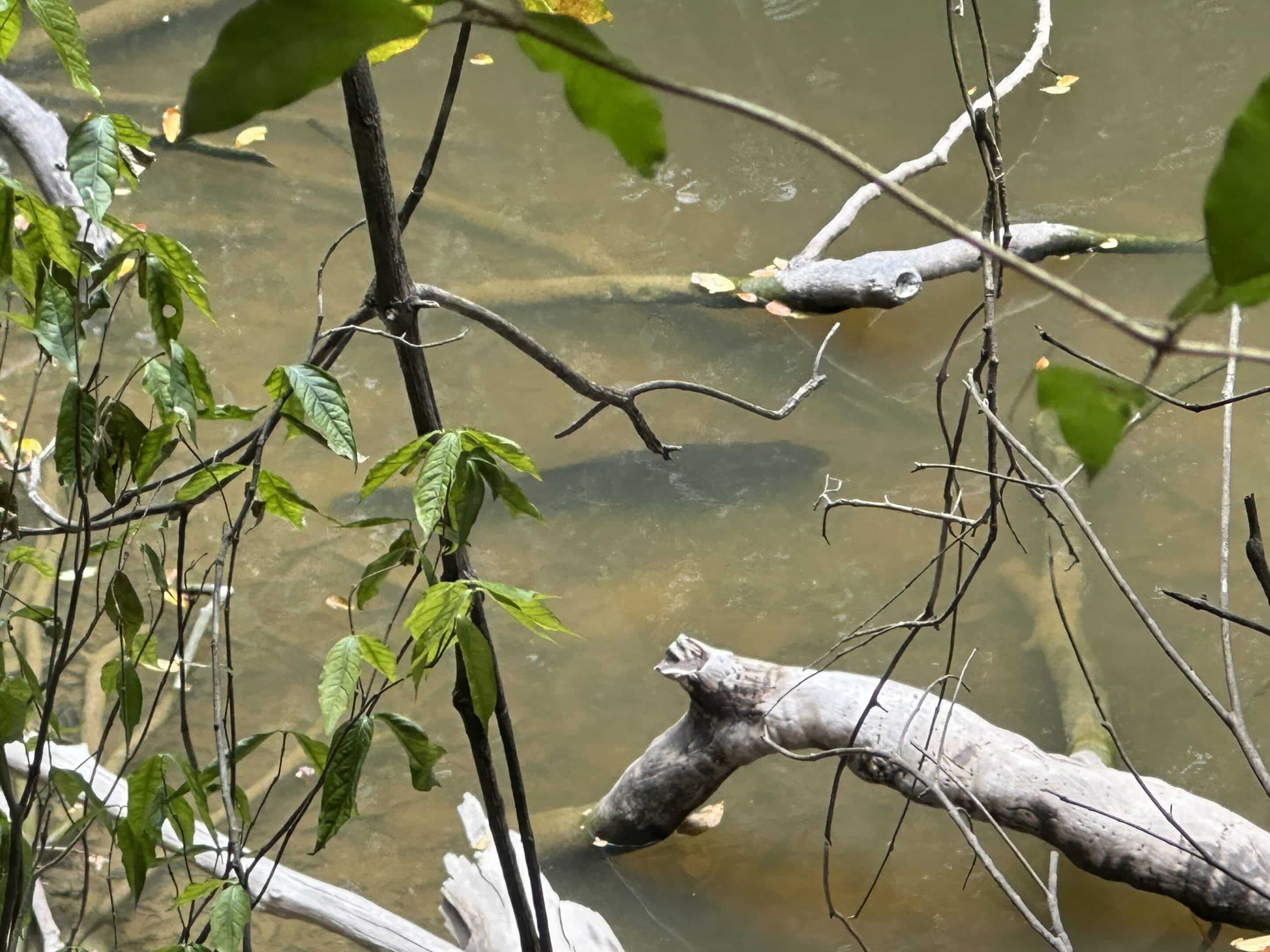
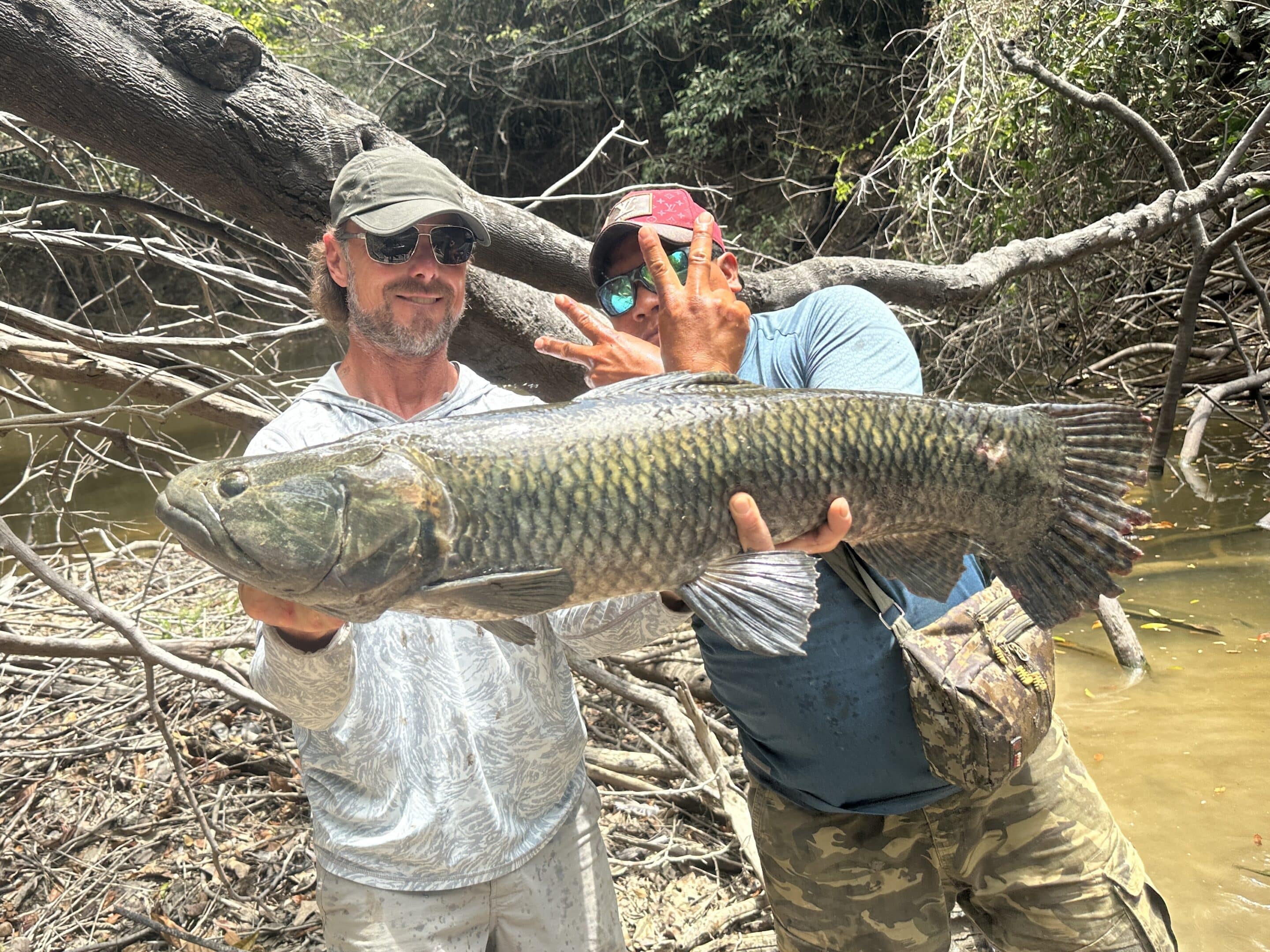
Later that day, we fished the river and had the most insane payara and catfish bite of the trip.
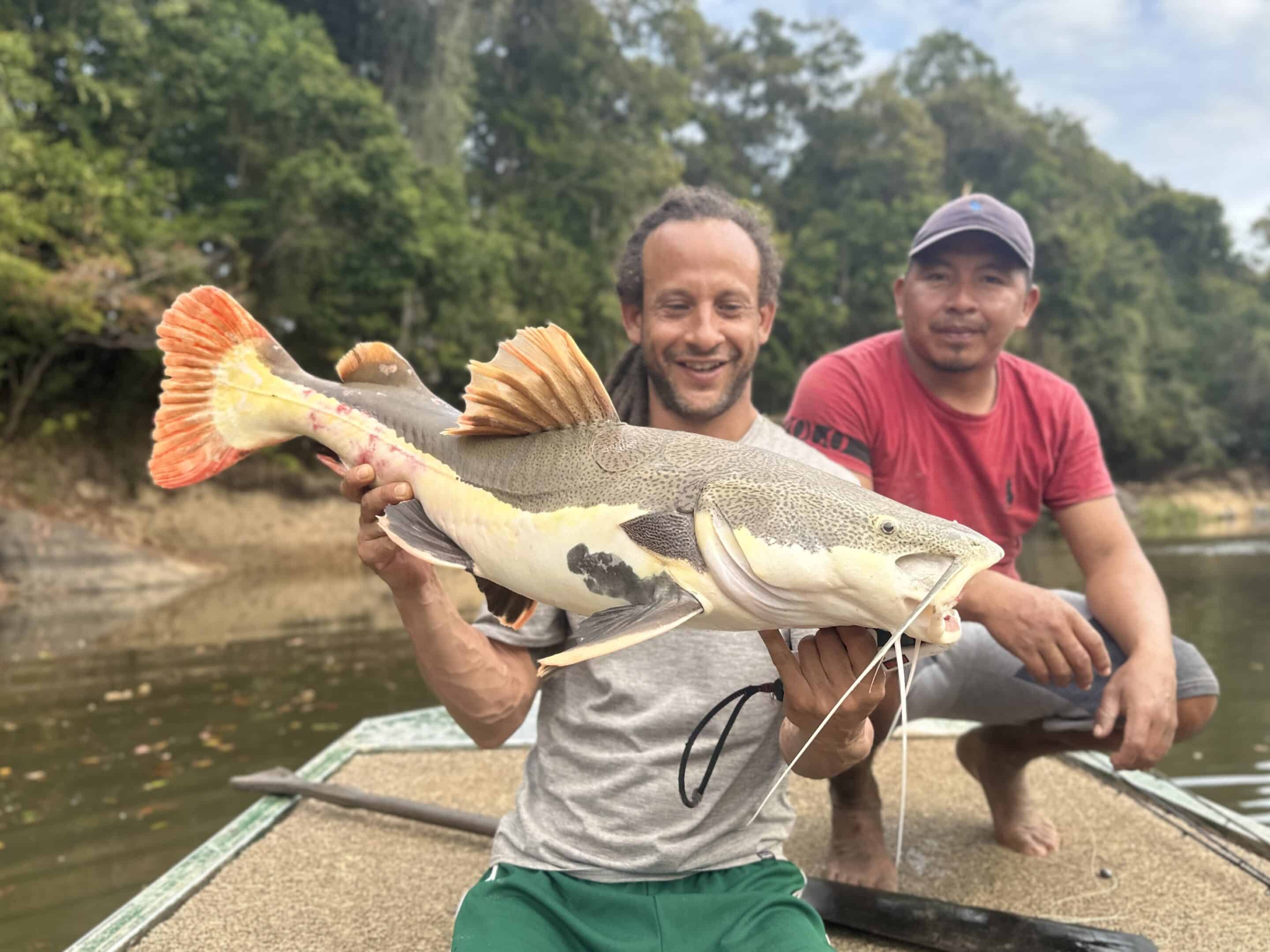
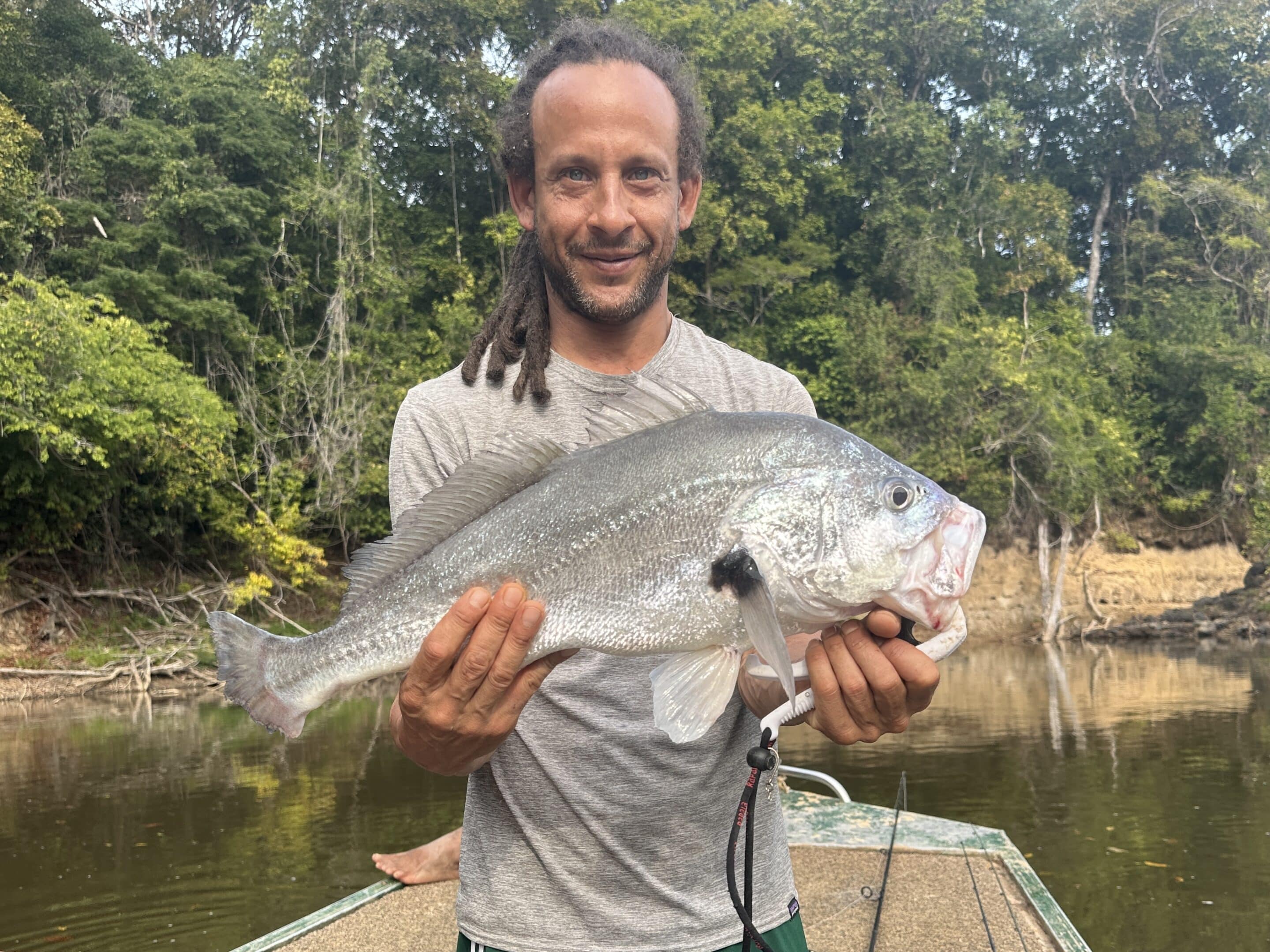
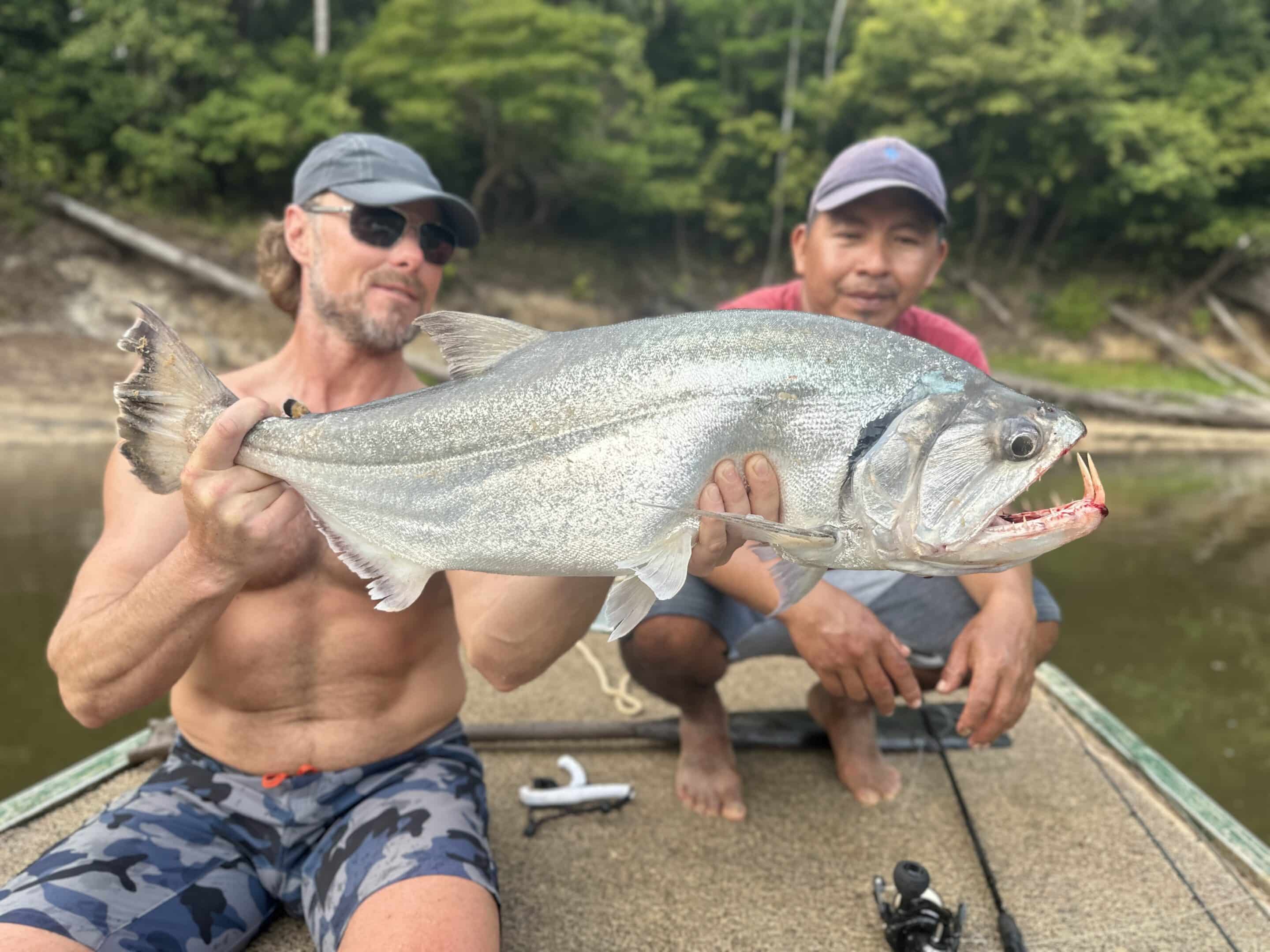
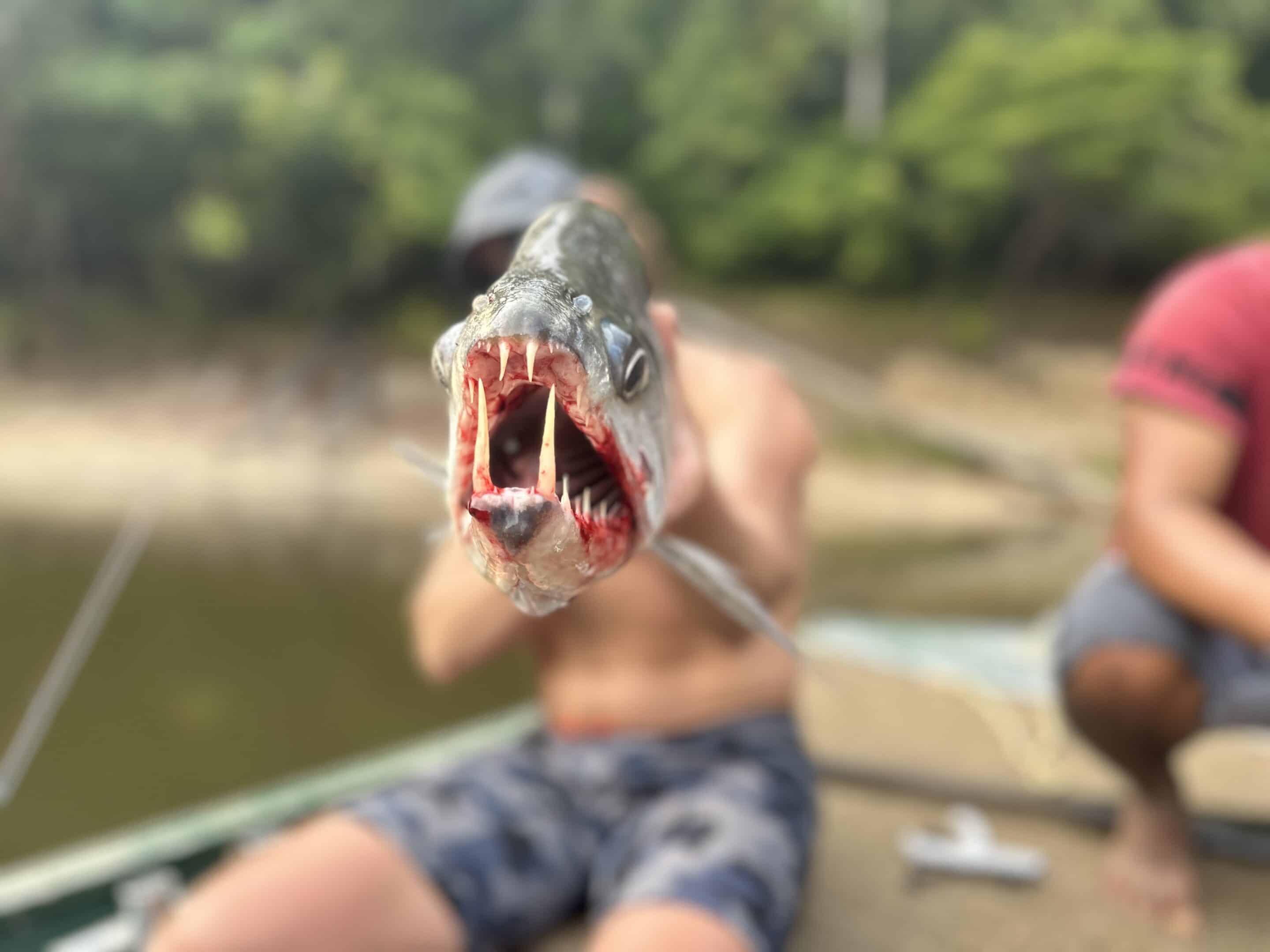
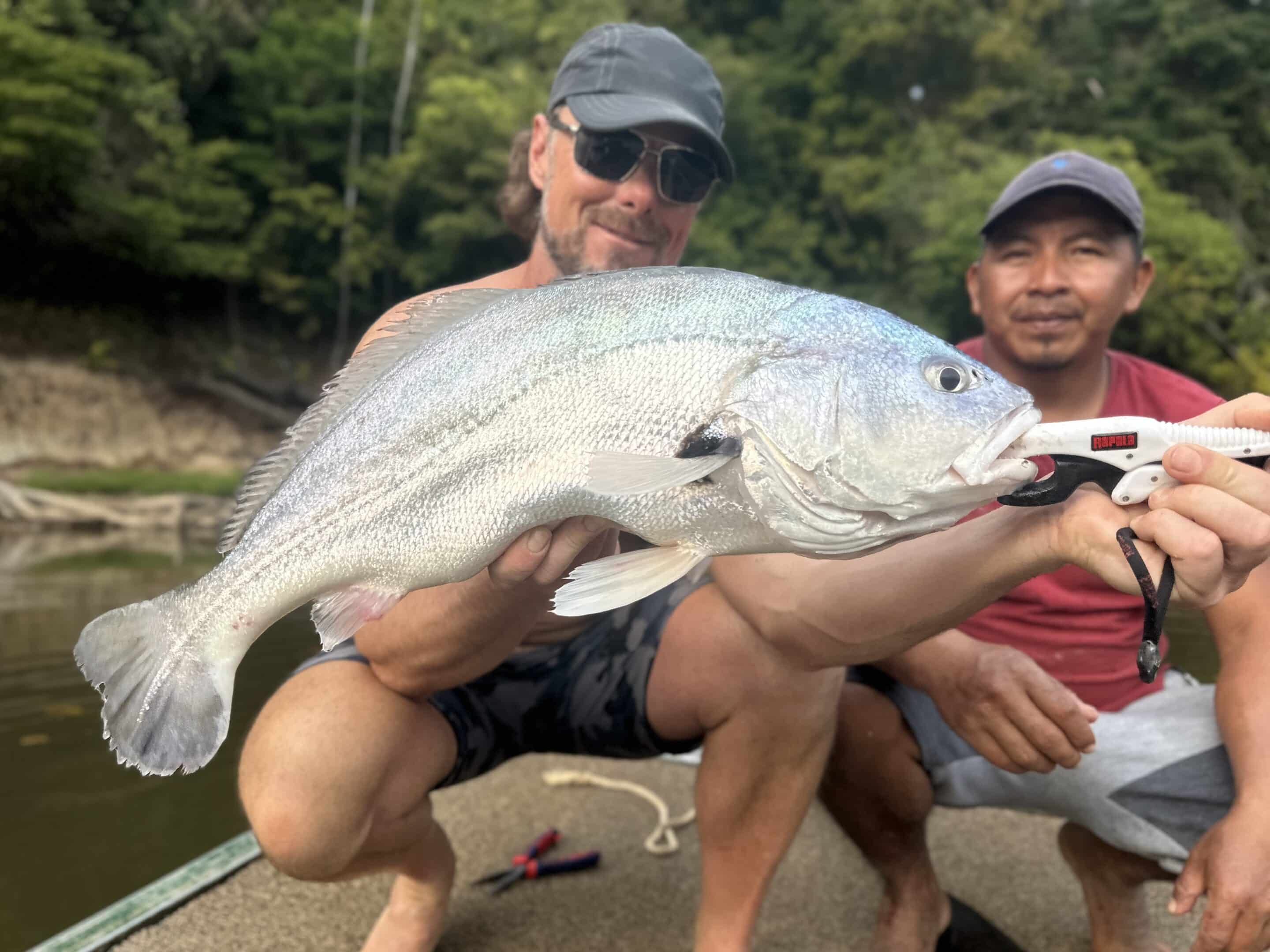
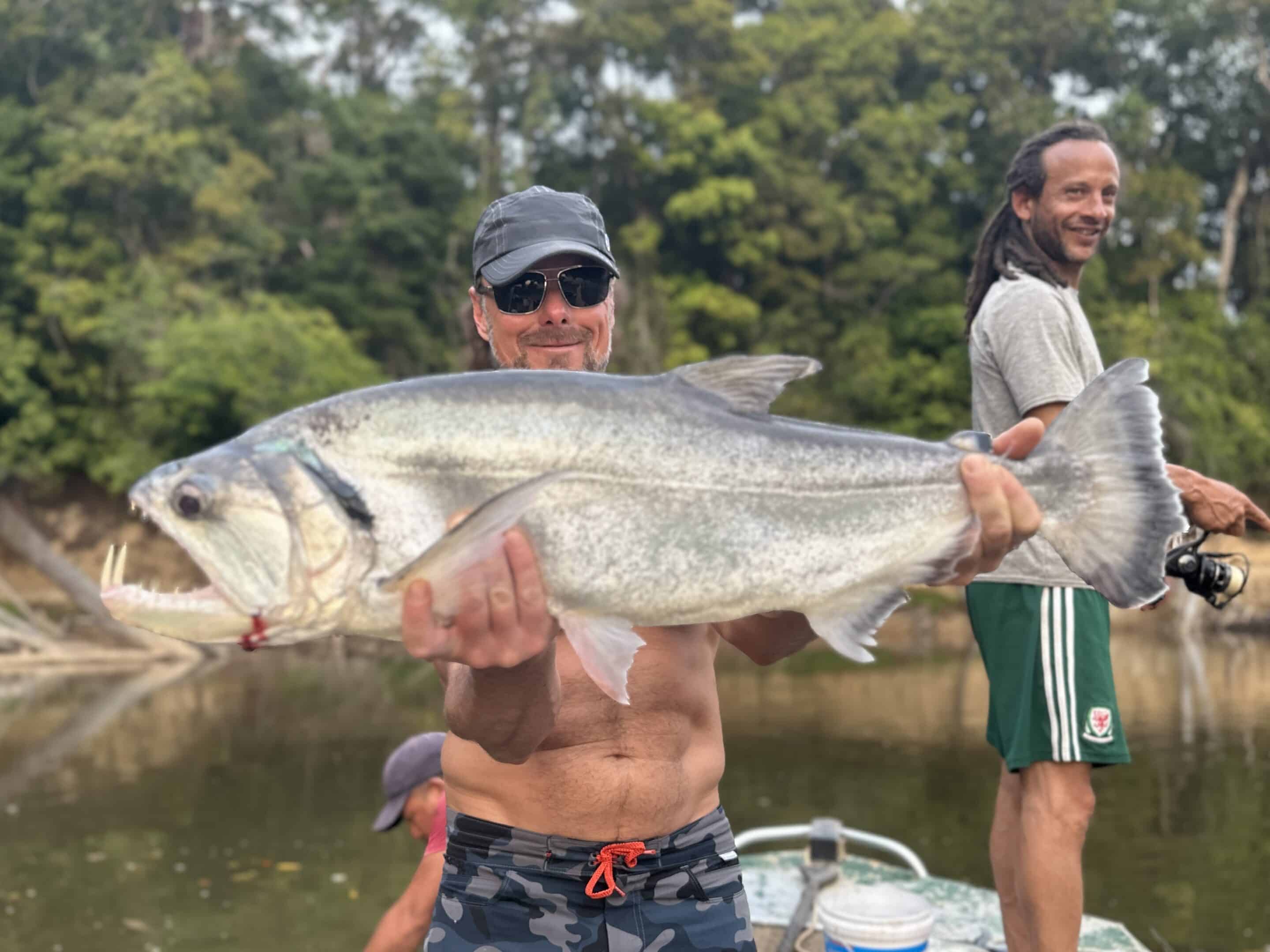
Day 10 – Sunday, Mar 3
After fishing hard for a week, it was time to relax, do some sightseeing, and explore the water upstream to see if it was reasonable for us to reach Corona Falls. As I’ve mentioned countless times so far, the water was SUPER LOW. After pushing far upstream and encountering numerous obstacles, we reached a decision point. We could have made the push to Corona, but it would have involved some brutal portages. So, we decided it wasn’t worth the effort considering how good the fishing was closer to camp. We ended up poking around, caught a brace of dawalla catfish for lunch, and relaxed.
We closed the day fishing for payara. Once again, the bite was excellent.
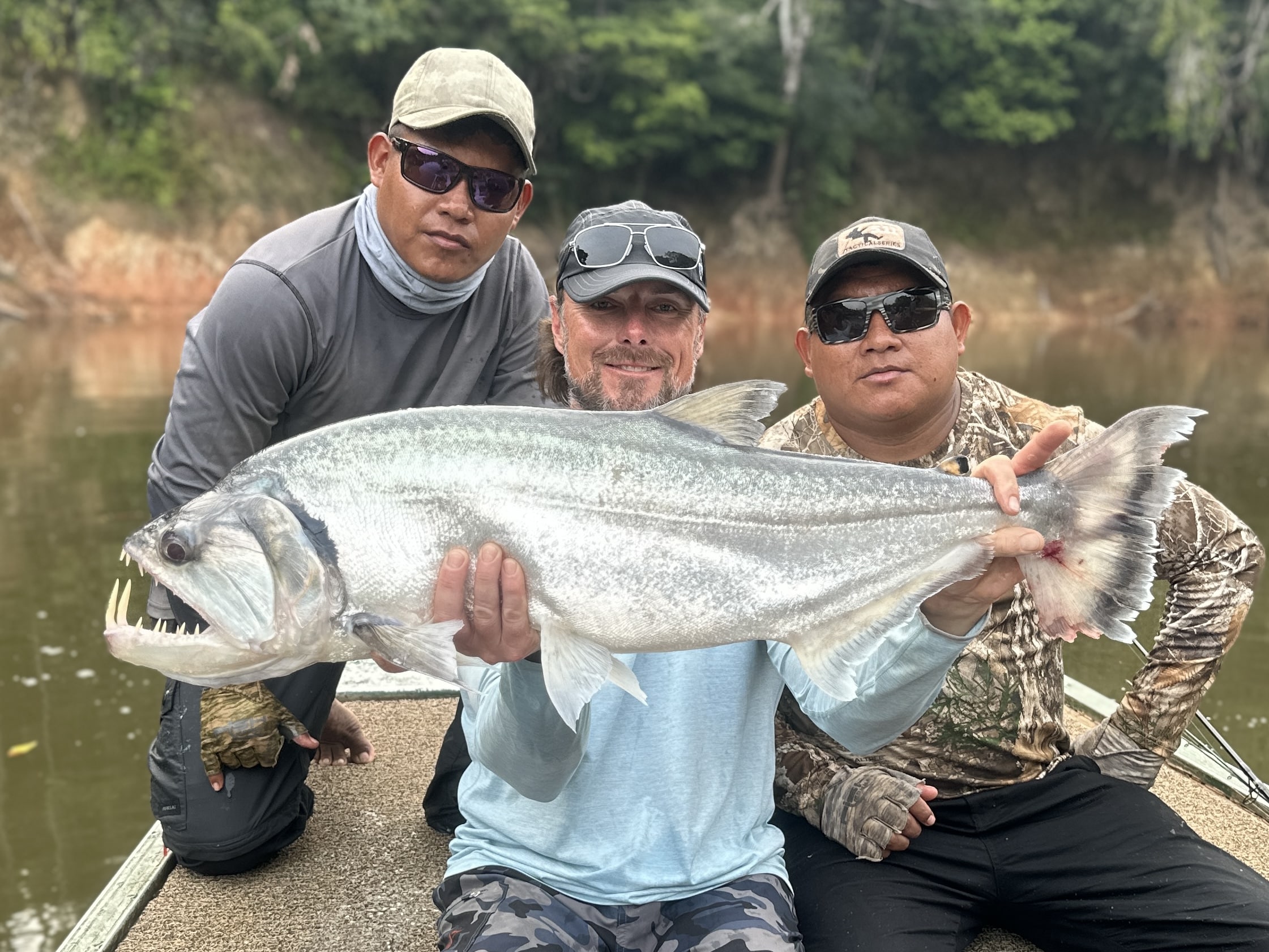
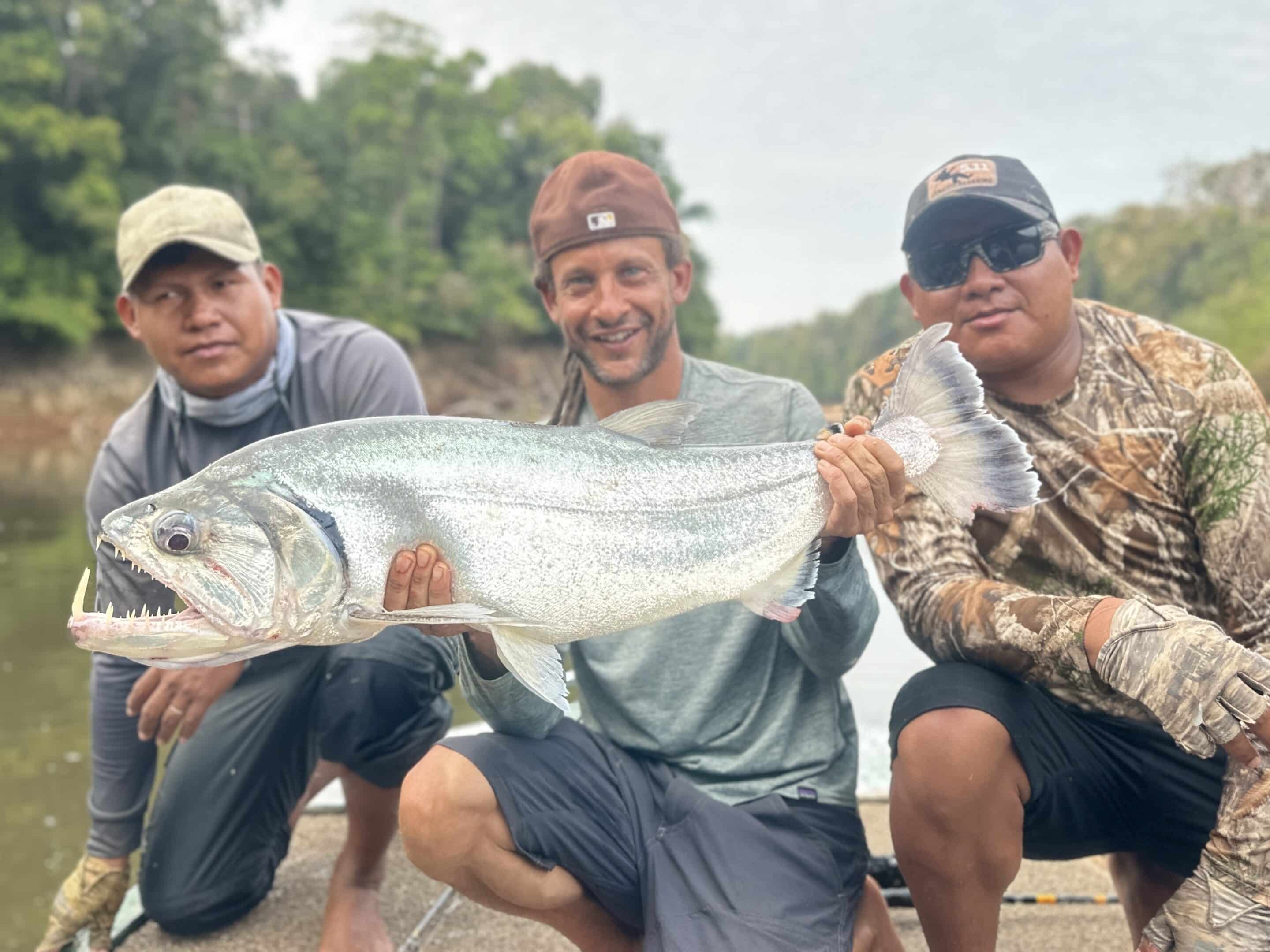
Day 11 – Monday, Mar 4
By this point in the trip, water levels dropped at least 8 inches in the river. We were getting concerned that getting downstream would require a lot of effort so we decided to make the push right away and set up a more expeditionary camp. Here are some videos of what the team accomplished in the matter of a couple hours:
While the crew was setting up camp, we fished a pond across the river from the location. I mentioned earlier that there was a day when the heat finally got to me. Well, this was that day. Look at how disheveled I look in these pics lol. I recovered later that afternoon.
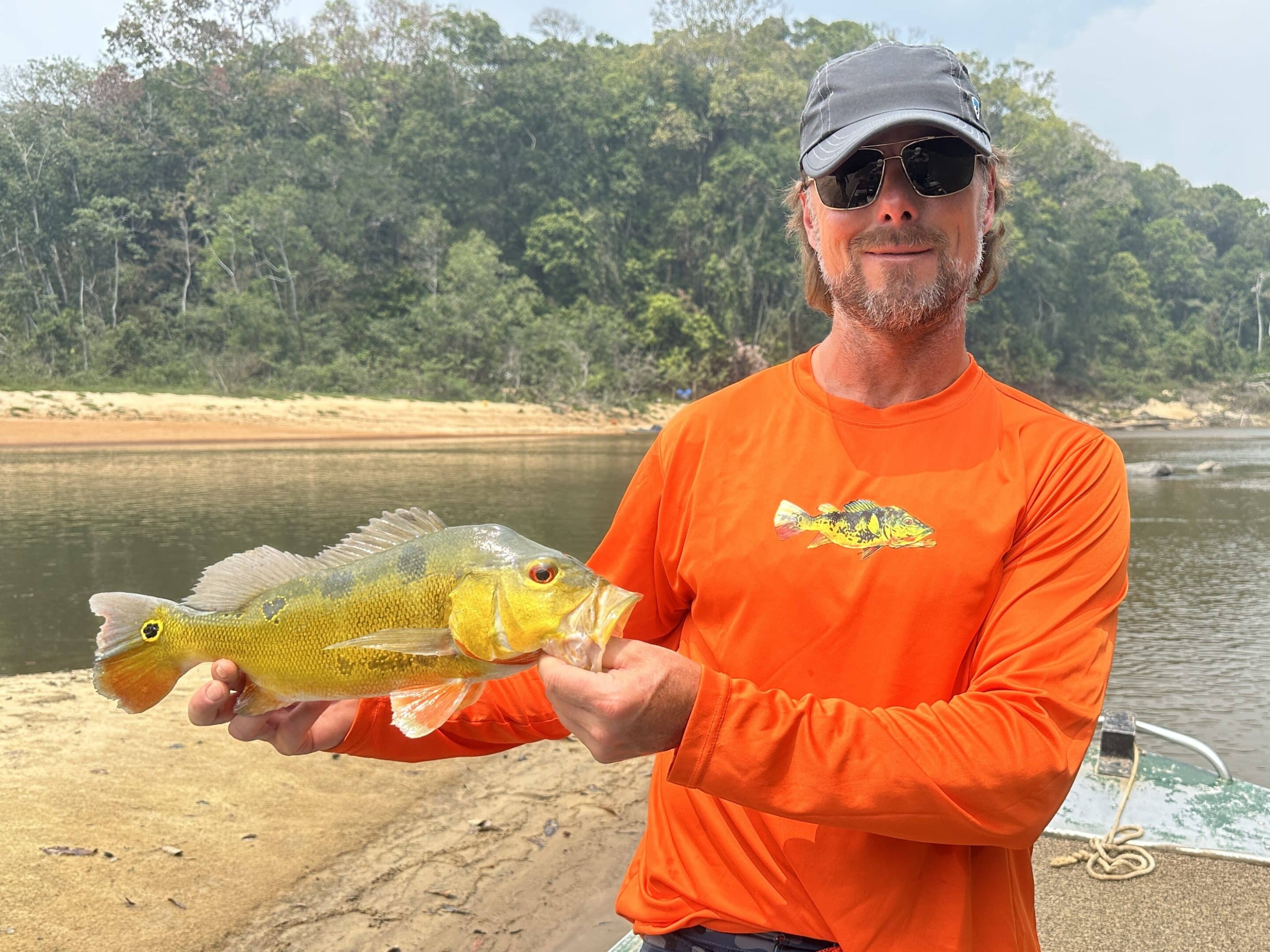
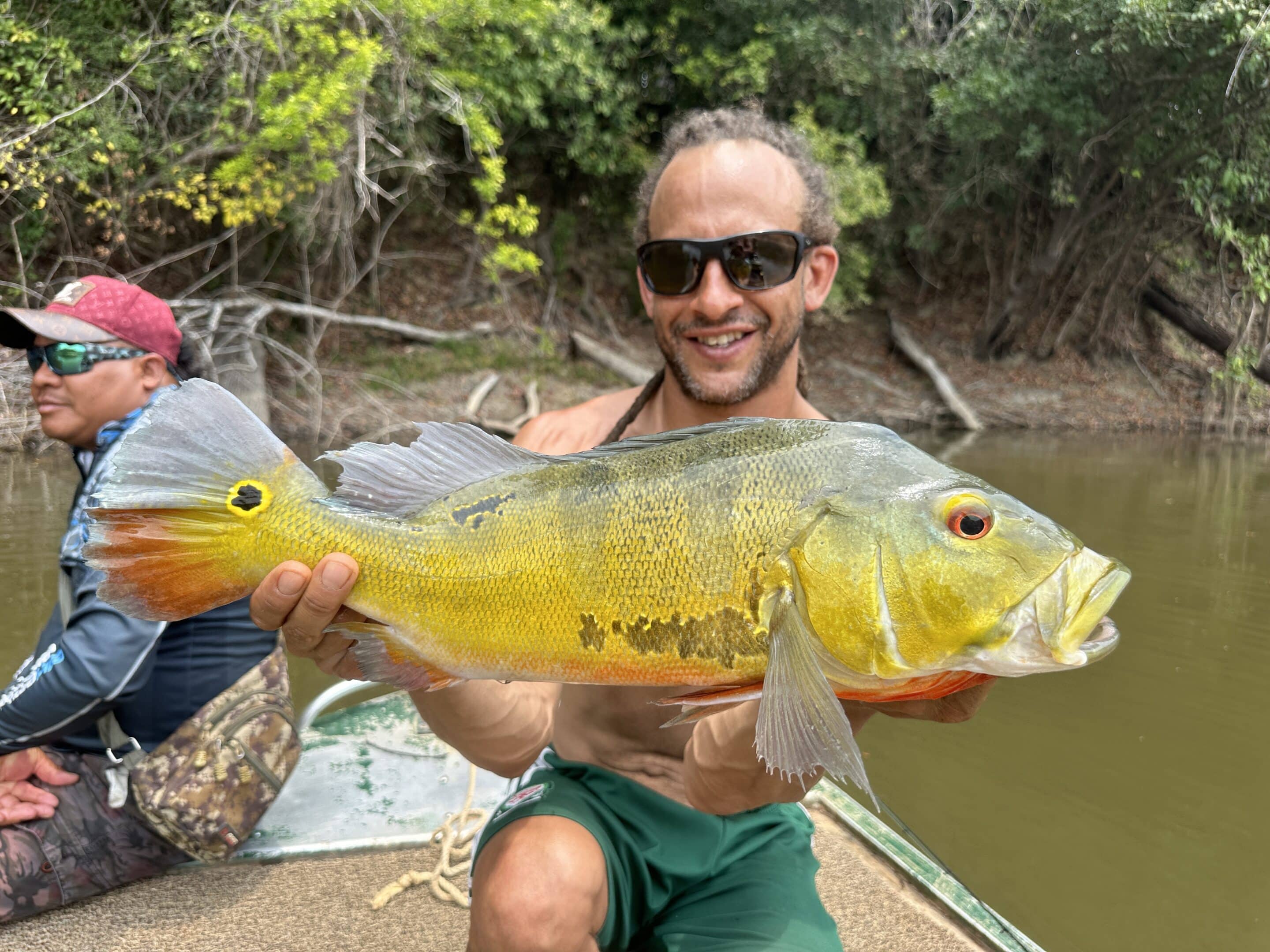
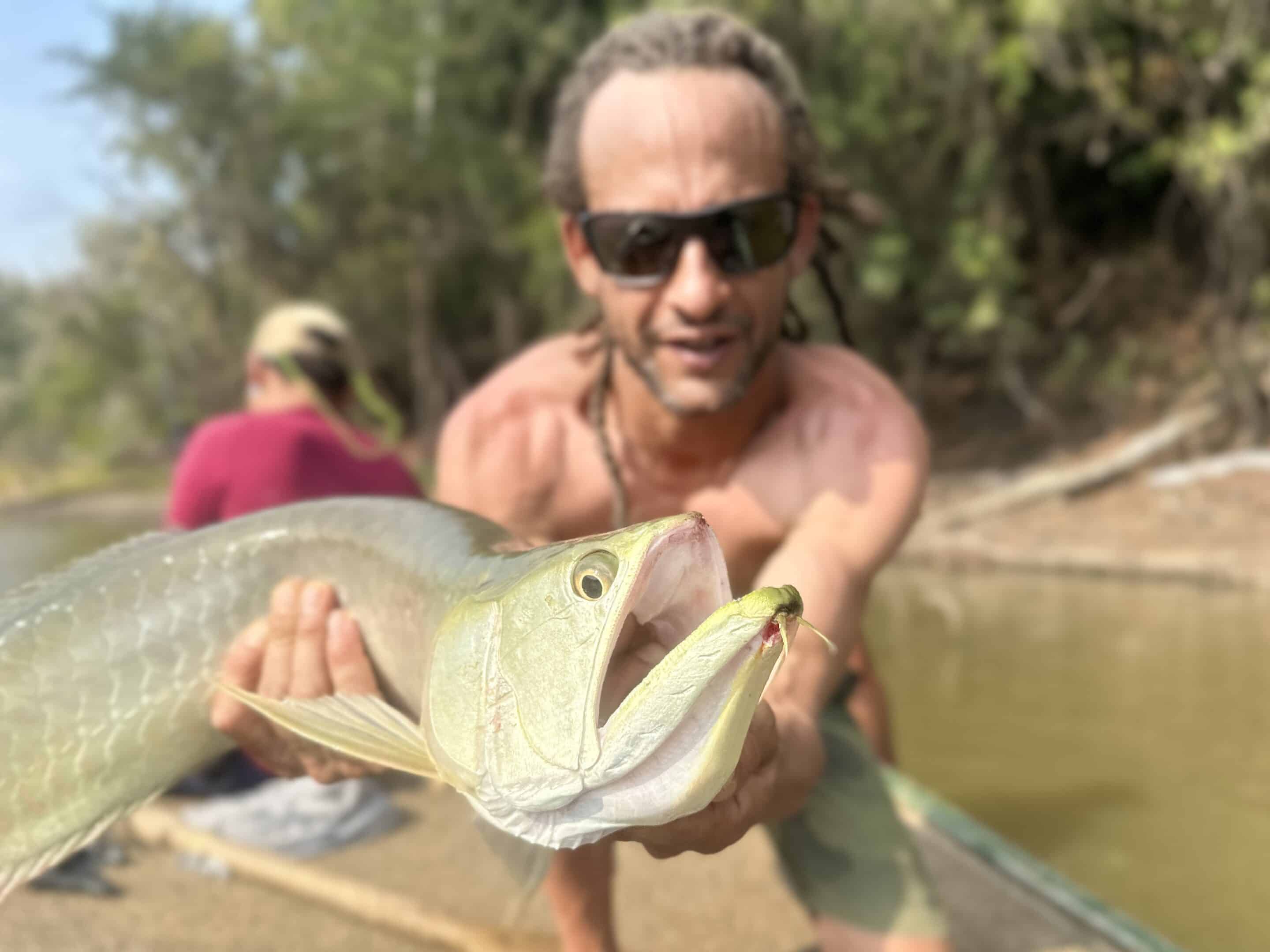
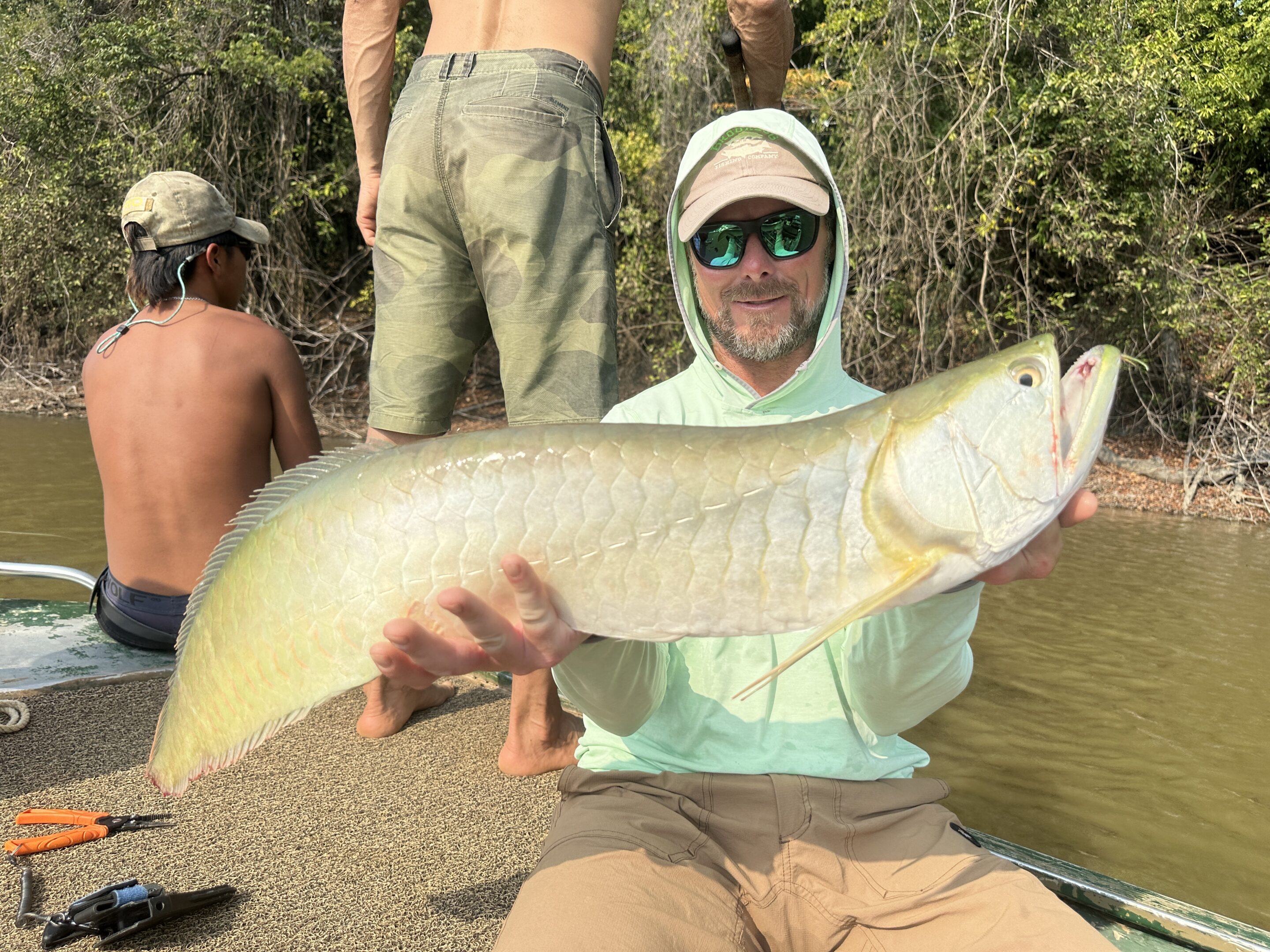
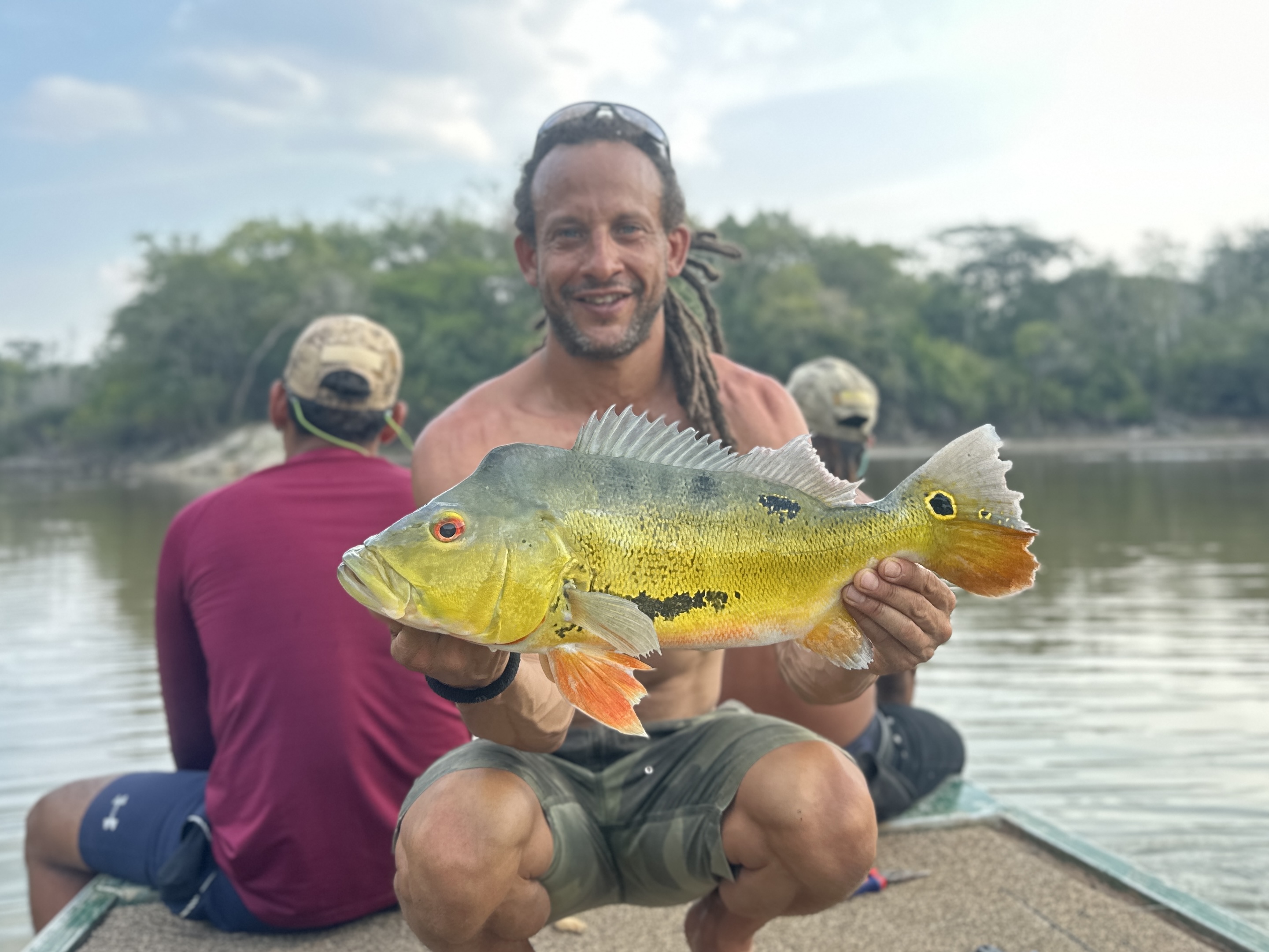
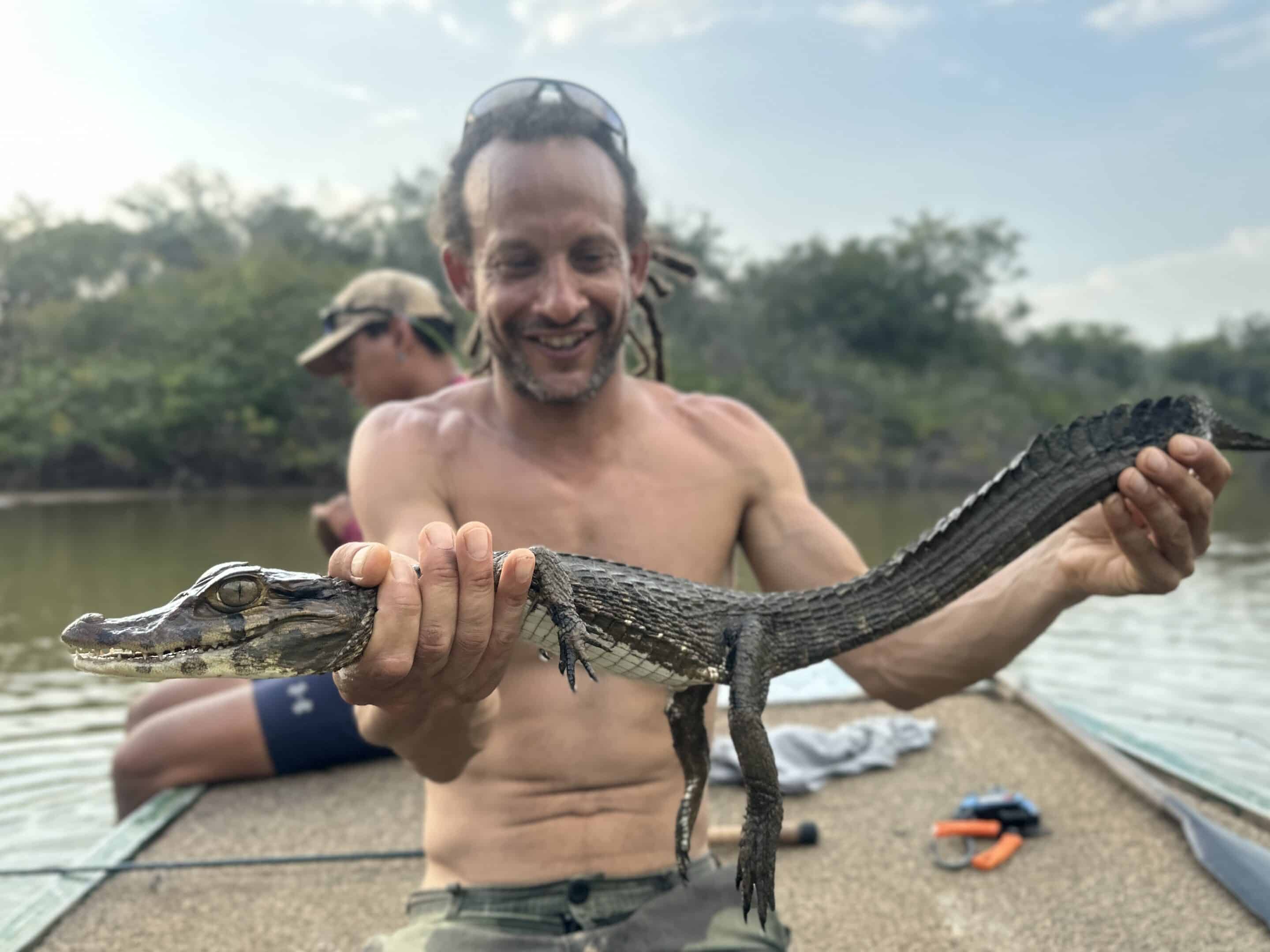
Day 12 – Tuesday, Mar 5
While the team broke down camp in preparation for our push back to Anteater camp, we fished catfish and arowanna in the AM. We followed that up with an afternoon hike into the jungle in pursuit of arapaima. I lost one but Jay managed to land his. We also had an interesting encounter with a black cayman nest. See here for the video:
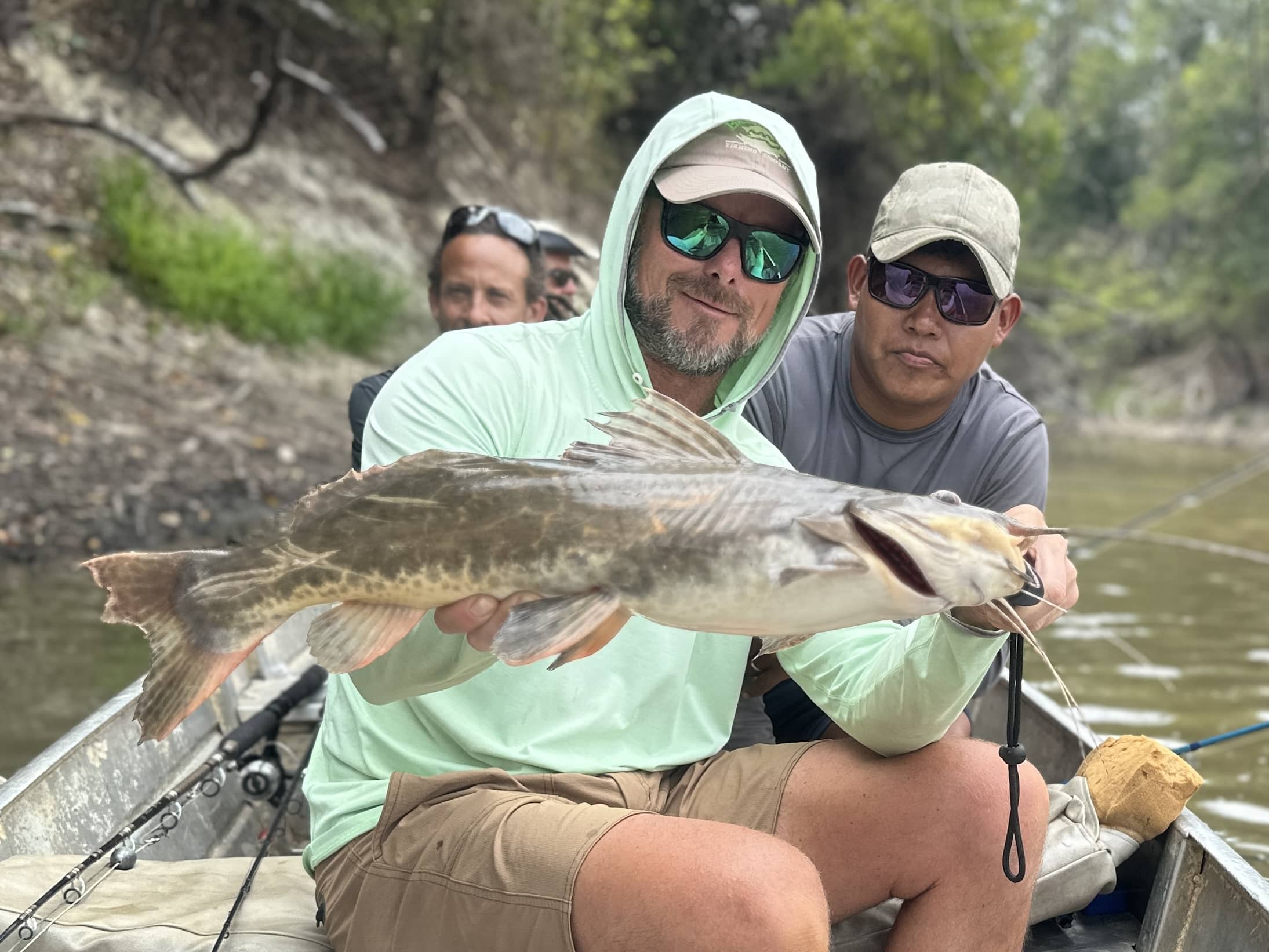
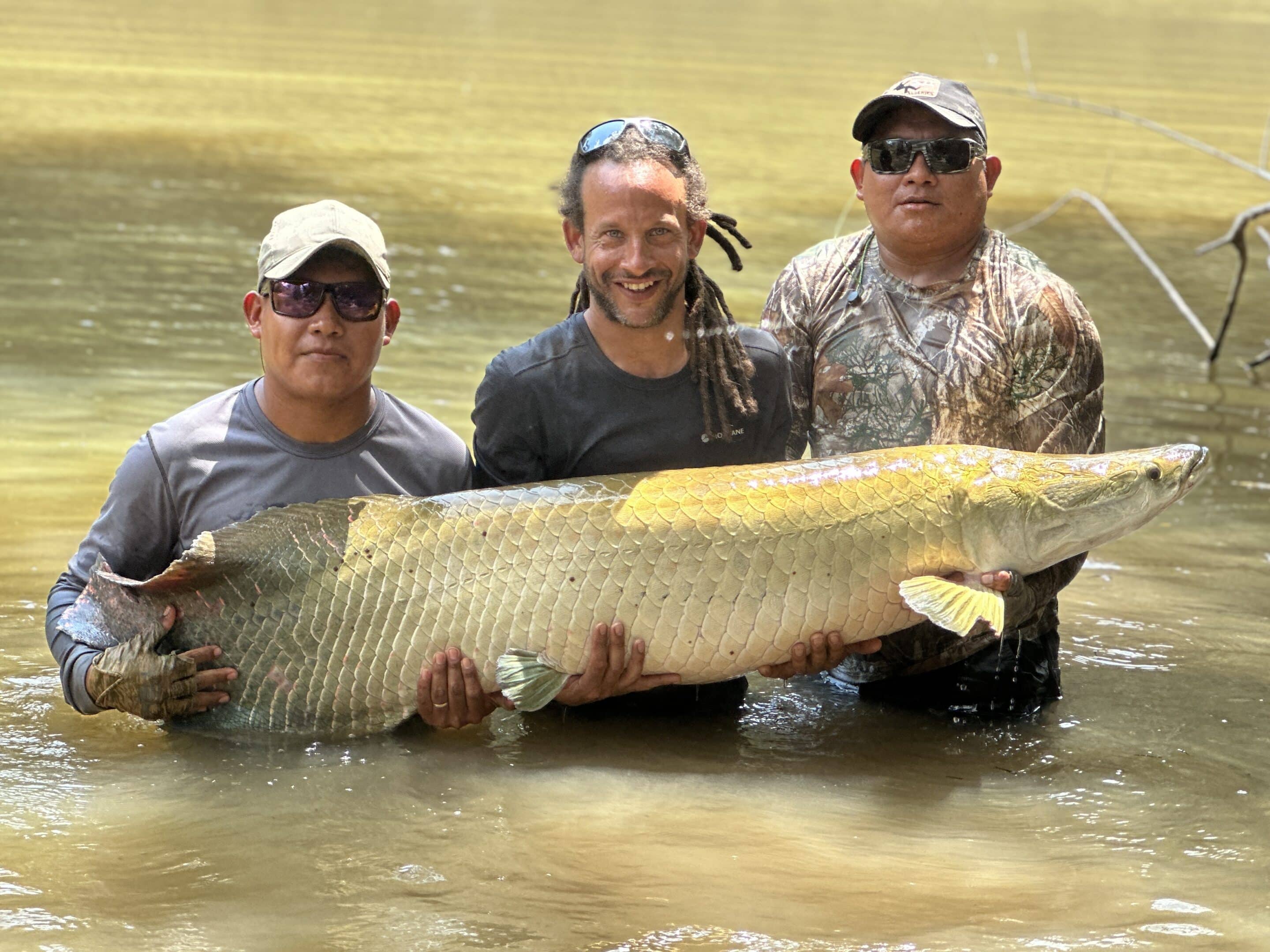
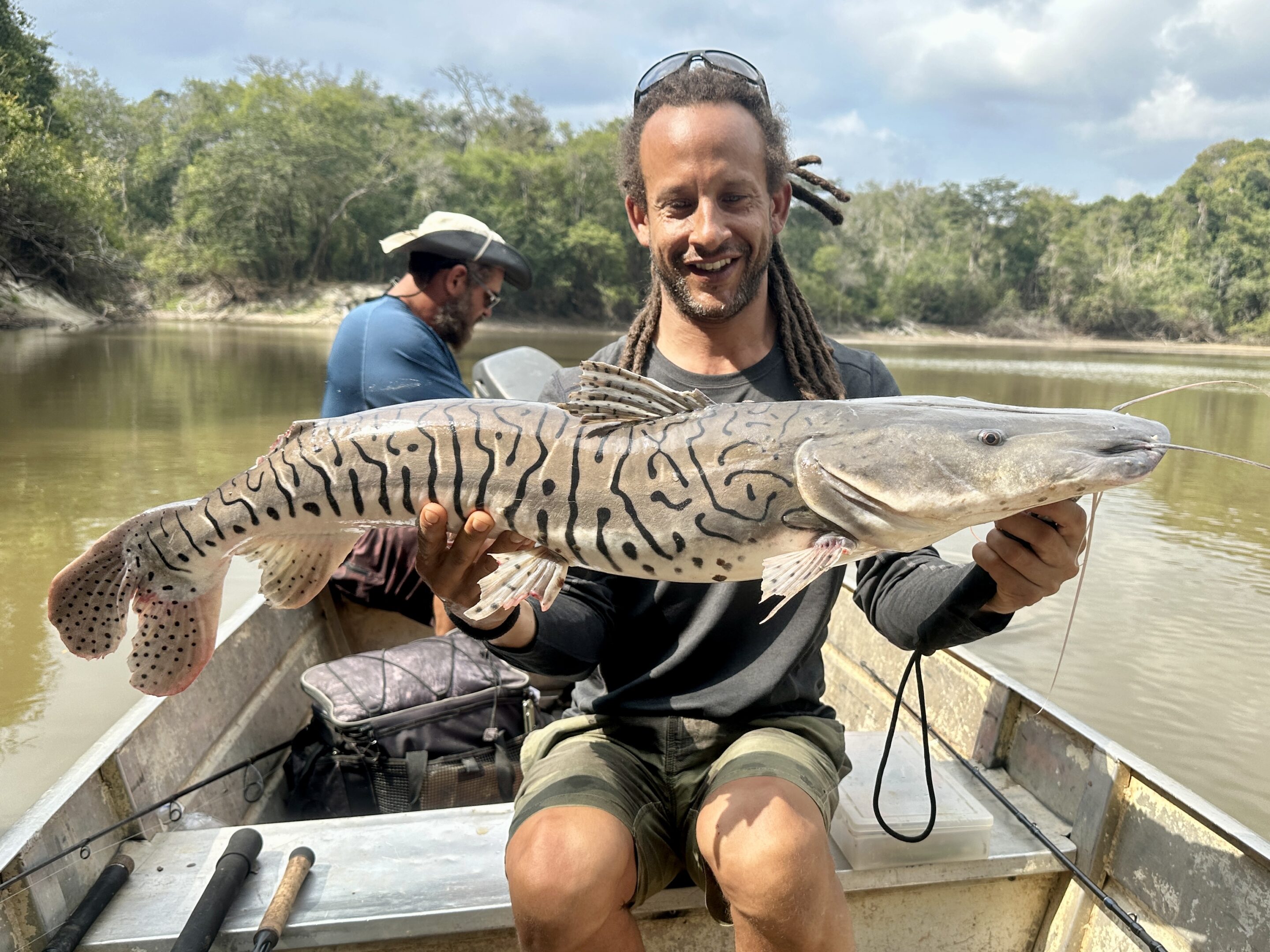
Day 13 – Wednesday, Mar 6
We pushed back downstream to our original camp – Anteater. Here’s a video of what that camp looks like from the water:
While the team restablished camp, we went downstream to another pond and fished for catfish and arapaima. That was the best leopard catfish bite I’ve ever experienced – numbers and size. We dropped one arapaima and landed another.
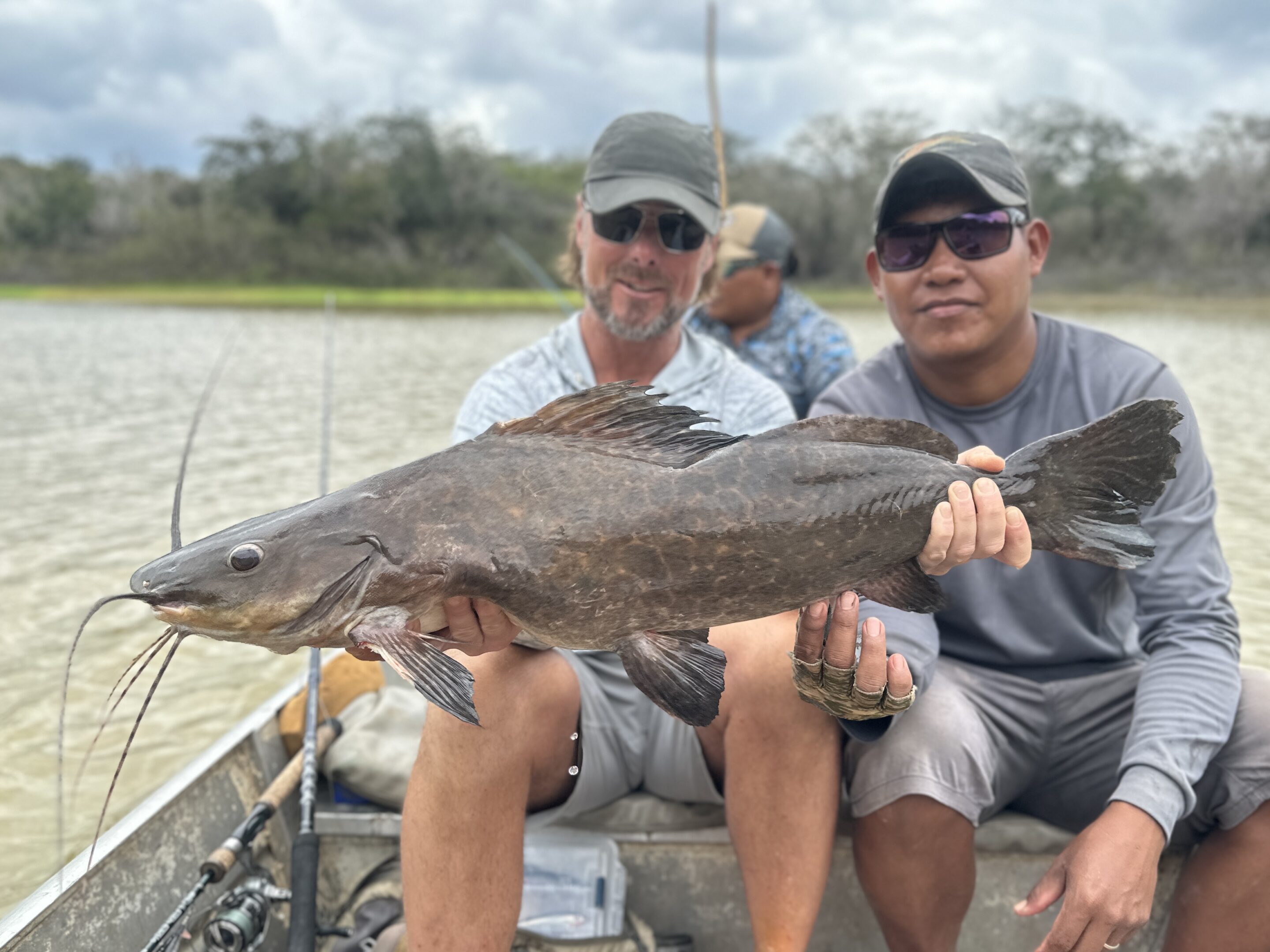
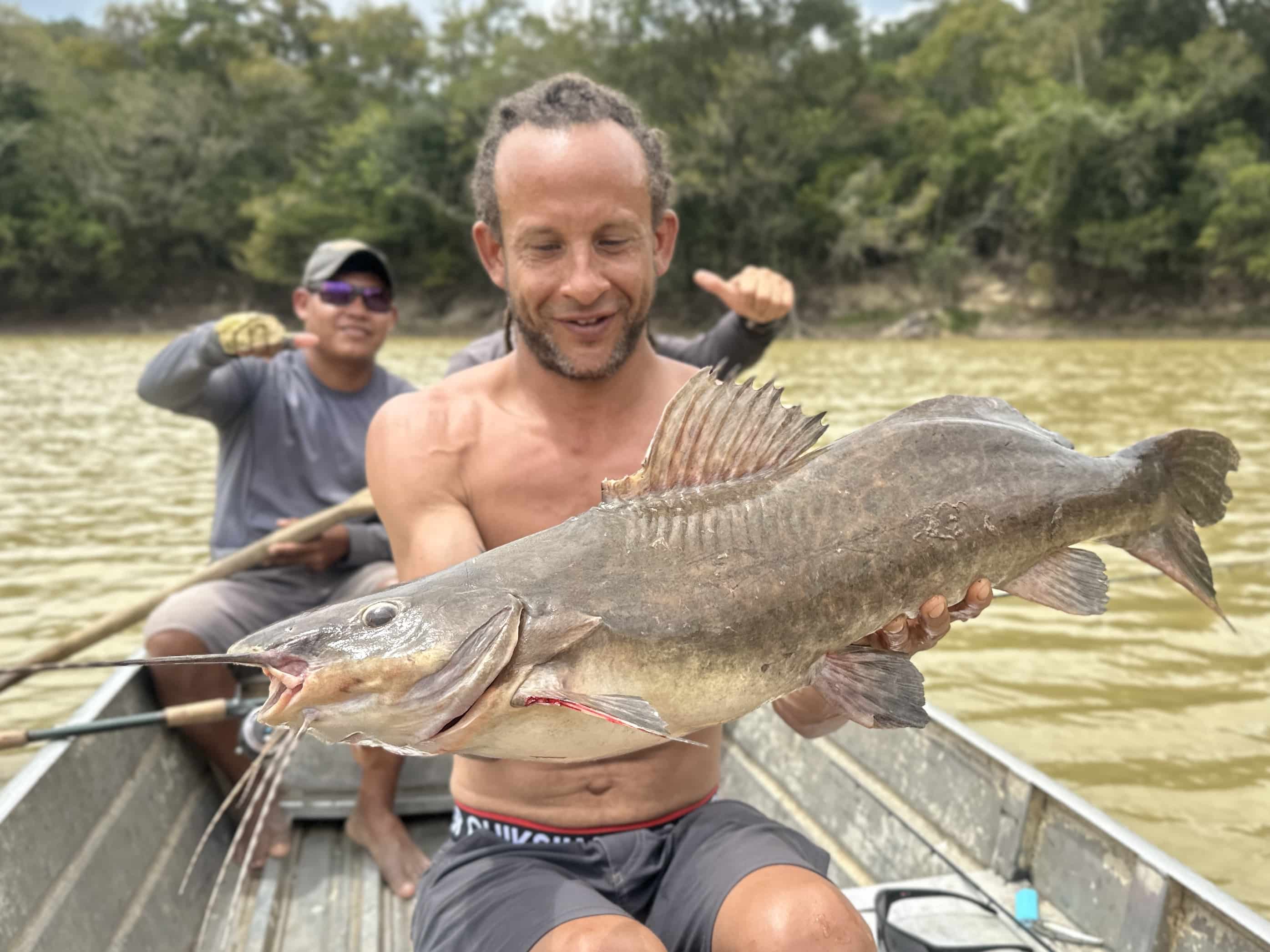
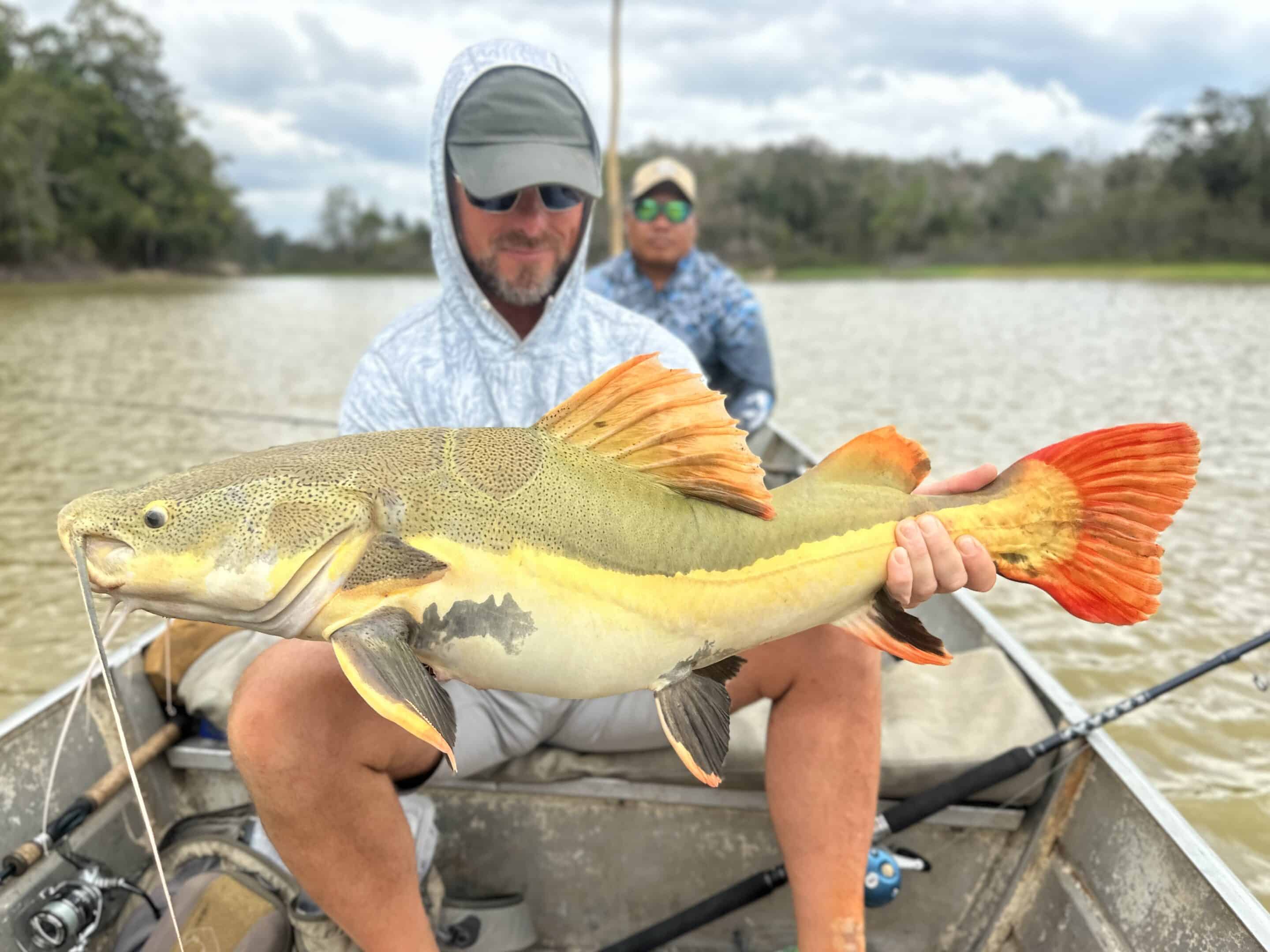
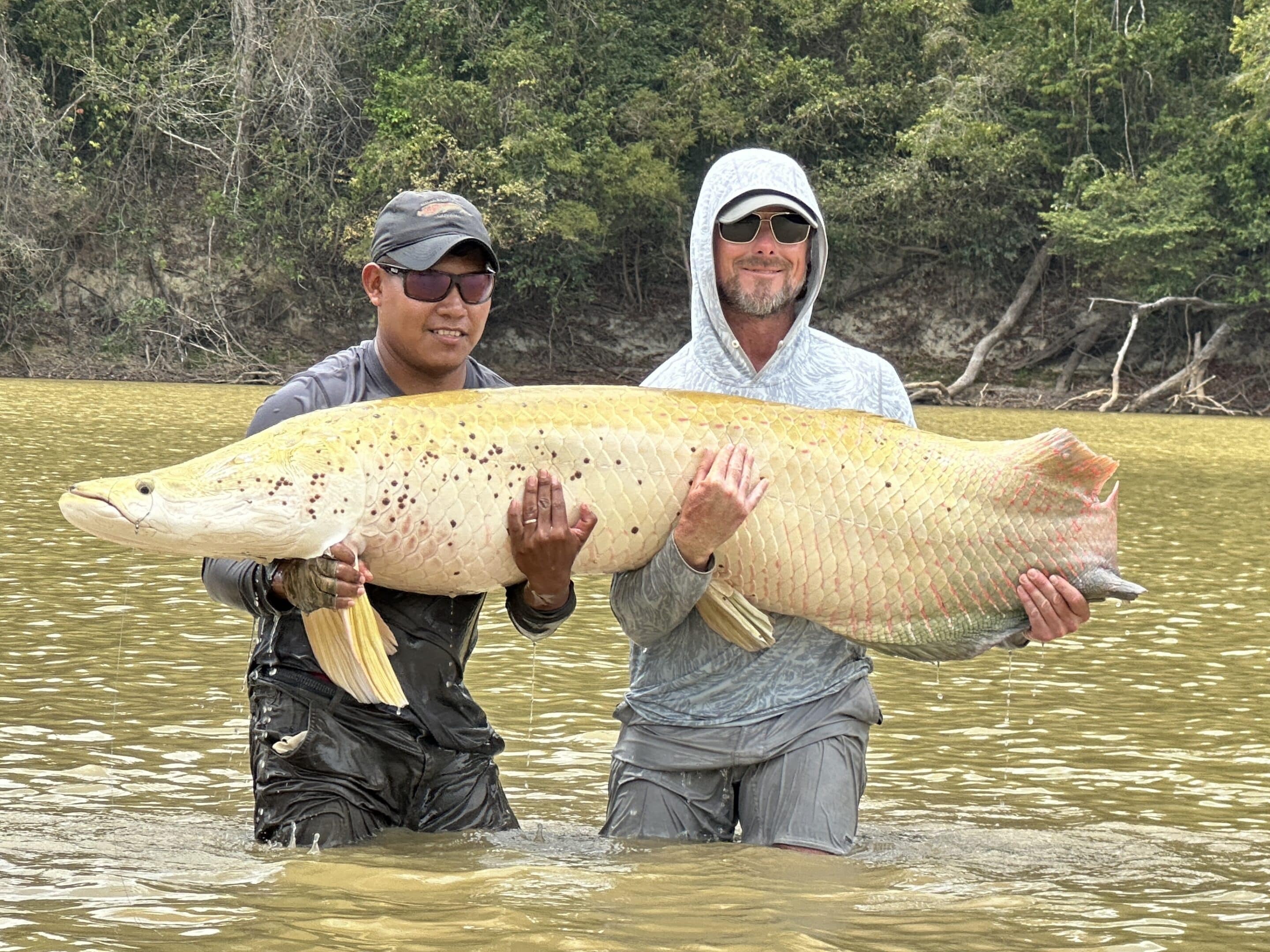
Day 14 – Thursday, Mar 7
With water levels continuing to drop, we became increasingly concerned that “getting out of the jungle” would be problematic. In the handful of days leading up to this point, it was common place for us to get stuck on a sandbar in less than 8″ of water. When this happened, we’d all get out of the boat and push it along until we got to deeper water.
I’m not saying this was a serious pain in the ass – it’s tough to complain about something like this when you keep catching monsters every day. Still, the team was looking at a potentially VERY LONG day of downstream travel if we didn’t make the push ASAP. So, we opted to cut the trip a half day short and make the push downstream and back to the ranch.
Before we broke camp, we spent a couple hours fishing for cats and got into more than a handful.
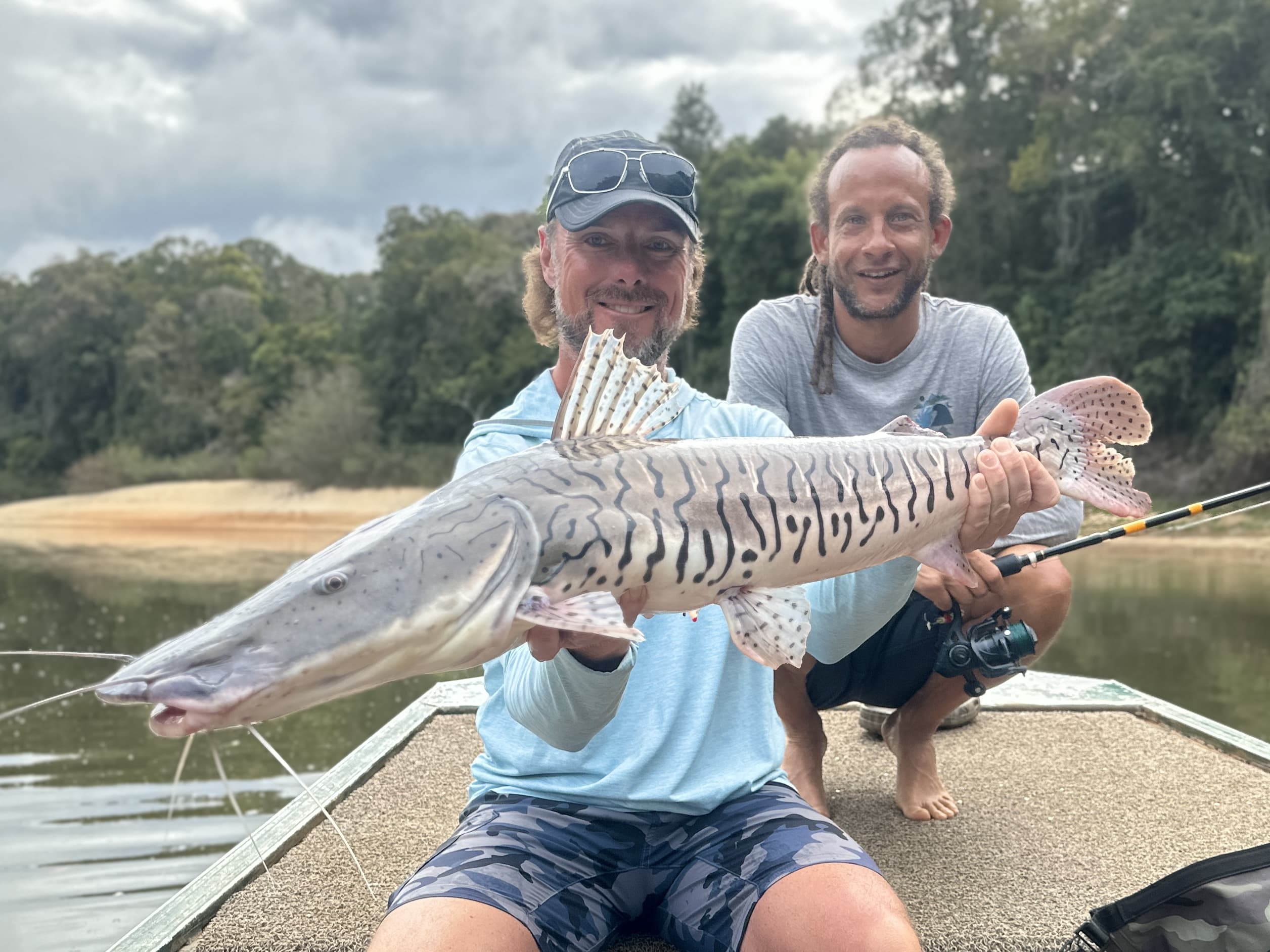
Day 15 – Friday, Mar 8
Spent the day at the ranch getting cleaned up, eating and drinking ’til our hearts were content, and relaxing. Larry Jones treated us to lunch in Boa Vista, Brazil. Side note – customs getting in and out of remote regions like this would blow the minds of us folks that live in the WEIRD world. Let’s just say that you can basically walk or dive right in.
Day 16 – Saturday, Mar 9
We flew from Lethem, Guyana to Georgetown, Guyana where we spent the night prior to departing back home.
Day 17 – Sunday, Mar 10
Flew home.
Conclusion
As you saw, this was an epic trip – and I don’t use that term lightly. Seeing the region this dry and hot shattered some of my earlier paradigms about the annual pattern of life in an equatorial rainforest. During the wet season, thousands of species of animals find comfort and protection among the trees and floor of the jungle. When the rain stops and the water drops, the jungle dries out and forces many of those animals to the edge of rivers and ponds. Watch this playlist to see what I’m talking about.
Although this drought is causing some problems for the region, we experienced the benefits of it. Just like the other apex predators, we were able to take advantage of huge concentrations of life and we thrived as a result.
I’ll keep going to Guyana every other year until I can’t physically make it anymore. Having seen the fishery flooded out, super low, and somewhere in between, I have to say that although the low water had it’s inconveniences, it’s worth enduring them for the numbers and size of the fish you’ll catch. In other words, my future trips will likely take place during low water conditions.
“Cast to the bramble,” was a phrase my Amerindian brothers often shouted to us. I don’t know when “bramble” entered their lexicon. Prior to this trip, I never heard them use this word, but I knew right away what they meant. The low water exposed so much timber that fish were often found hiding in the last batches that remained in the water. Casting into the bramble was treacherous – like begging to get snagged – but the reward was almost guaranteed if your bait hit the water (instead of a branch). There’s a metaphor here, I’m sure.
If you’re interested in booking a trip like this, contact Larry Jones at this link – Guyana Eco Fishing & Adventure Tours | Rupununi District of Guyana’s Wilderness | Captain Larry Jones & Guide Jules Fredericks (guyanafishing.com)
Stats
List of Animals we Saw
- Over 90 species of birds – I used the Merlin Bird ID app. In other words – I either saw or heard over 90 species of birds. Most of which I saw or heard multiple times.
- Paca – Lowland paca – Wikipedia
- Tapir – guyana tapir – Search Images (bing.com)
- Black Cayman – black caiman guyana – Search Images (bing.com)
- Spectacled Cayman – specticaled cayman guyana – Search Images (bing.com)
- Giant River Otter – giant otter – Search Images (bing.com)
- Freshwater Stingray – Interesting animals of the Rupununi – Guyana Times International – The Beacon of Truth
- Red Brocket Deer – The Red Brocket Deer In Guyana Are The Largest Of The Brocket Deer! – Things Guyana
- Turtles – they were rare this year compared to my previous visits. On those earlier adventures, the turtles were laying eggs. On this trip, the eggs already hatched and all but a few nests were left. Often times, we’d see birds digging up those late hatchlings and we’d pull over and save a few.
List of Fish we Caught (names in quotes are the native name)
- arapaima
- arowana
- dawalla catfish – Hypophthalmus edentatus (scotcat.com)
- tiger shovelnose catfish or suribime catfish
- “blinker” catfish
- “mangie” catfish –Doras carinatus (fishbase.se)
- black tail pirarah
- yellow tail pirarah
- peacock bass
- redtail catfish
- black piranha
- long jaw piranha
- red belly piranha
- “butter” catfish
- “sunfish” – Crenicichla macrophthalma (fishbase.se)
- ahuri (kind of like a mini wolffish)
- himara (the big wolffish everyone wants to catch)
- “basher” – it’s a freshwater drum with a lot of teeth
- bicuda

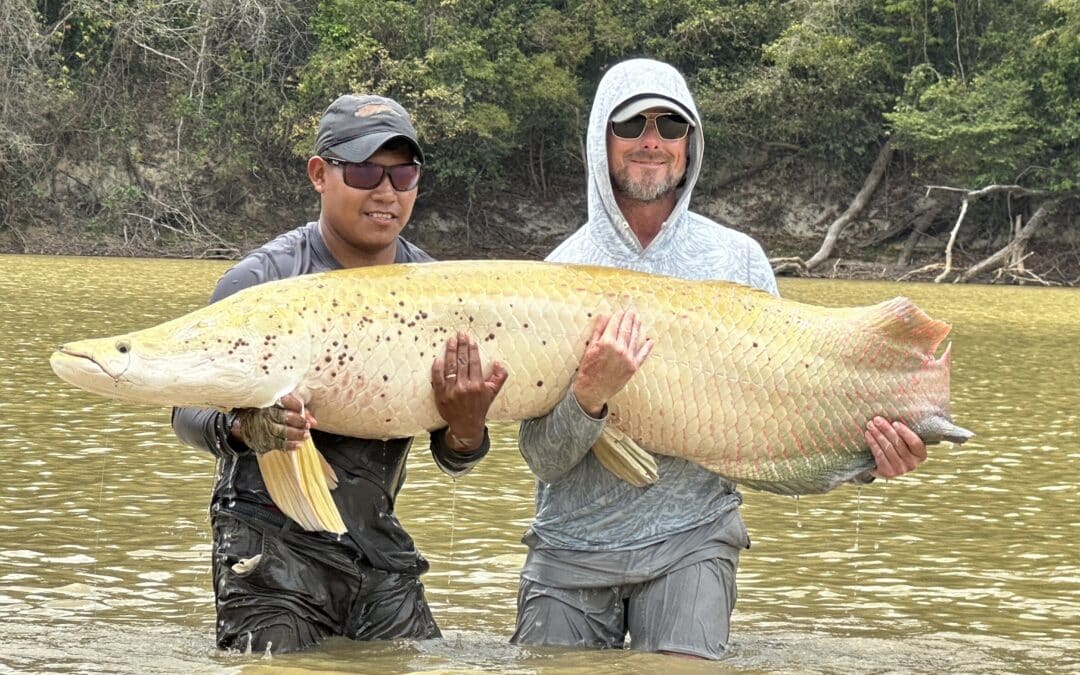
Absolutely epic, Ryan, thanks for sharing!
What an amazing adventure in all of its dimensions! Beautifully written—I felt like I was there with you the whole time! Thanks for sharing this wonderful story and your deep observations with all of us.
Amazing post! Read every word